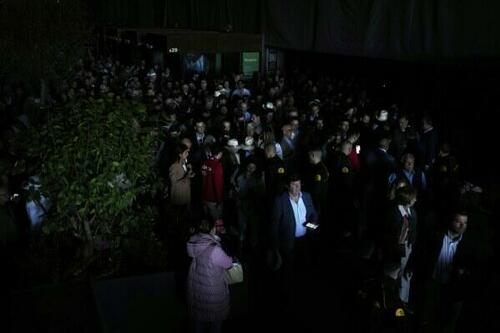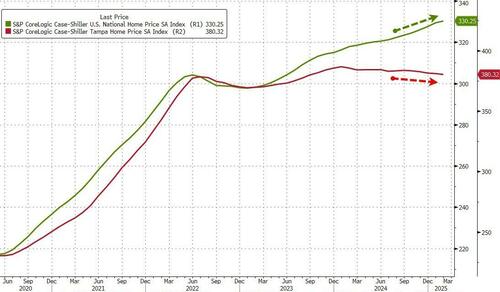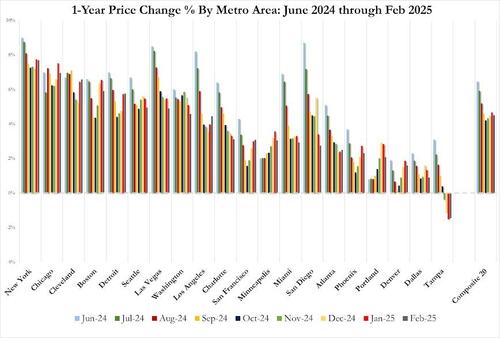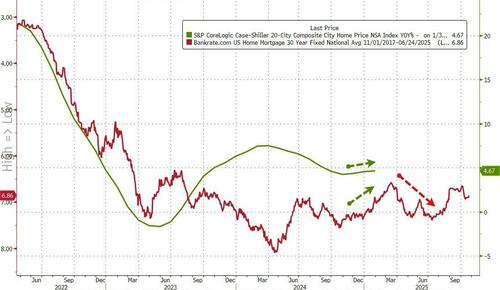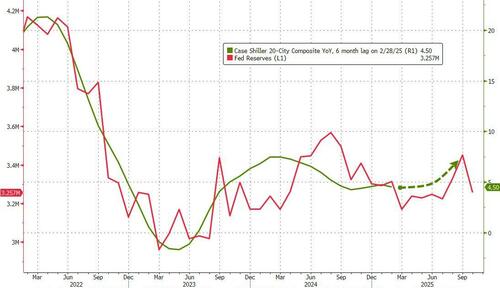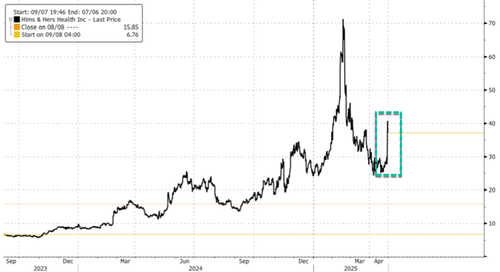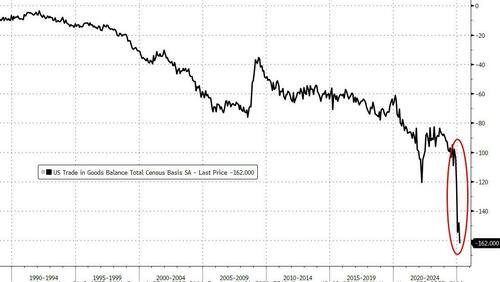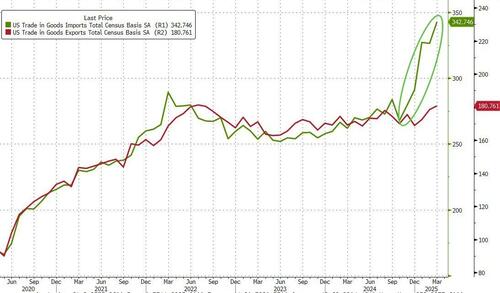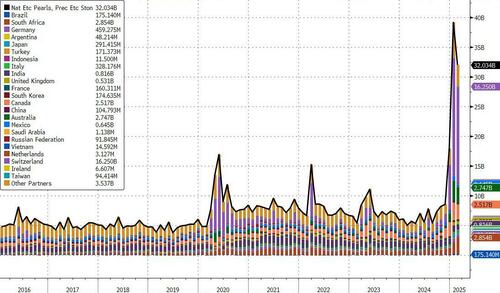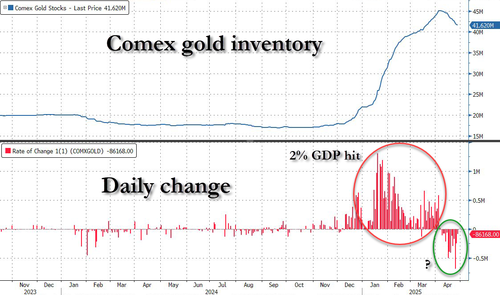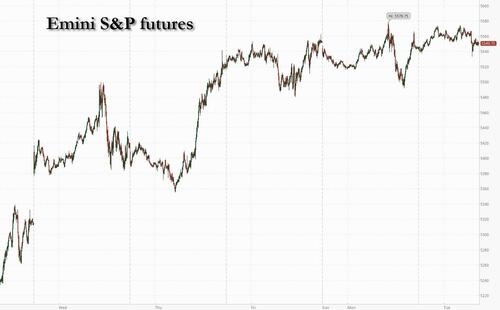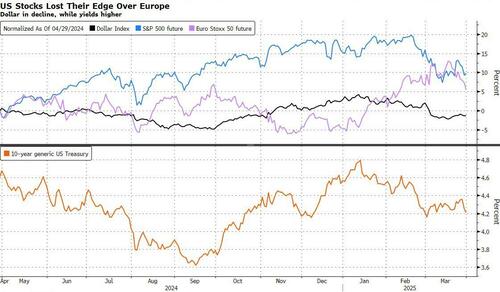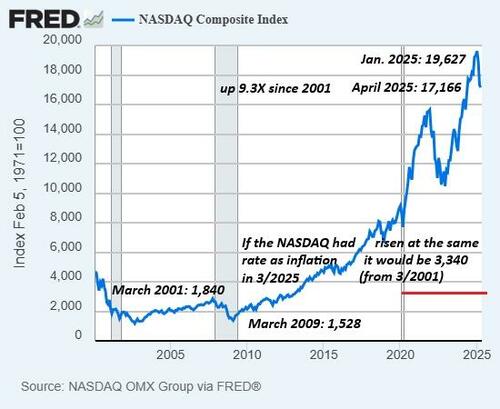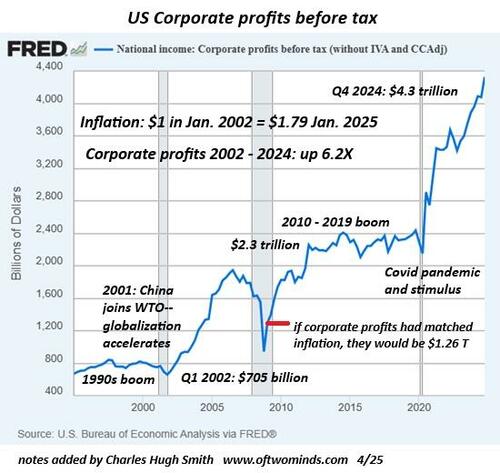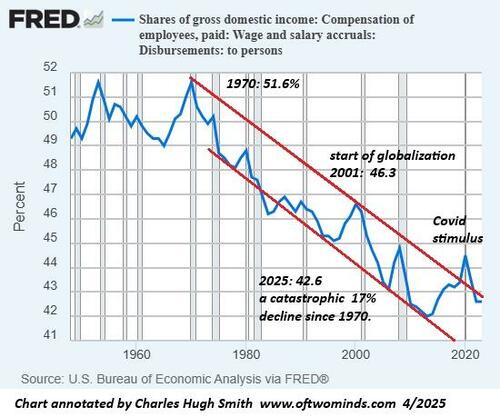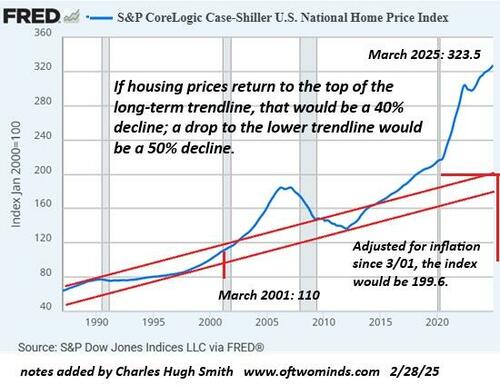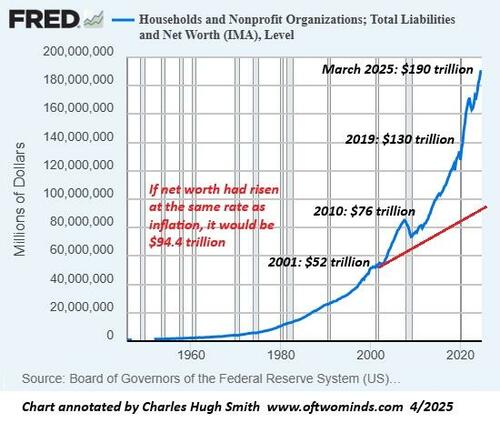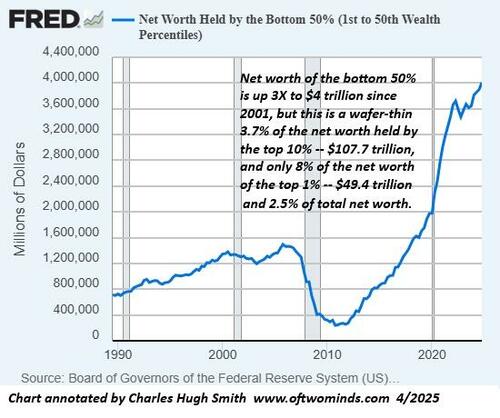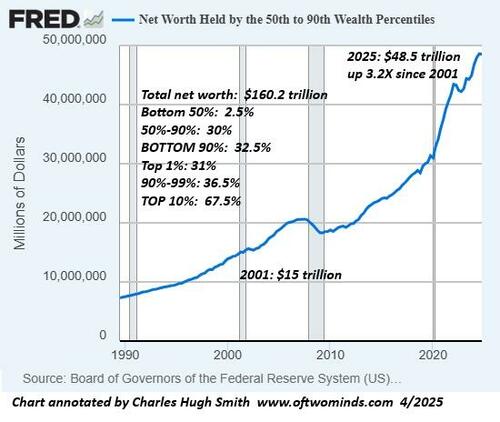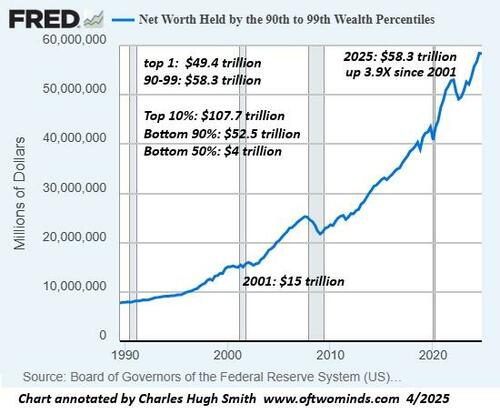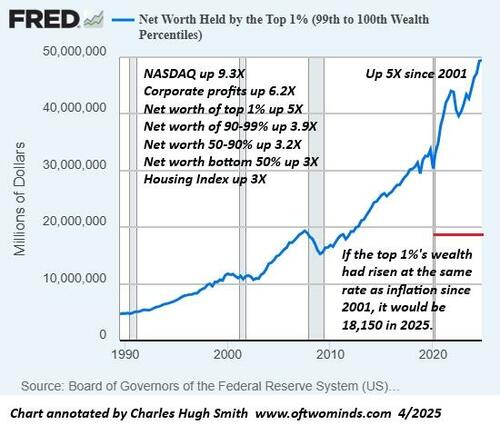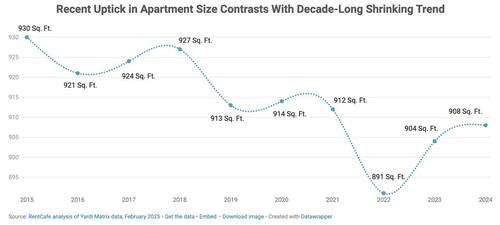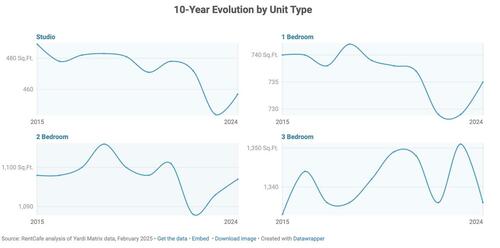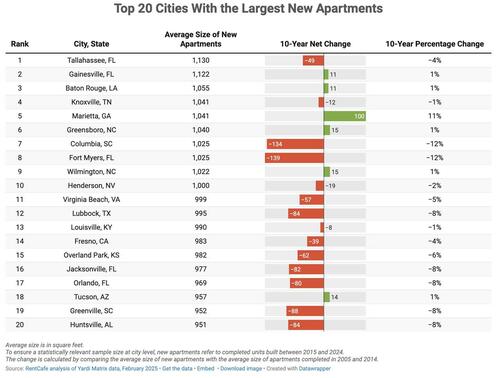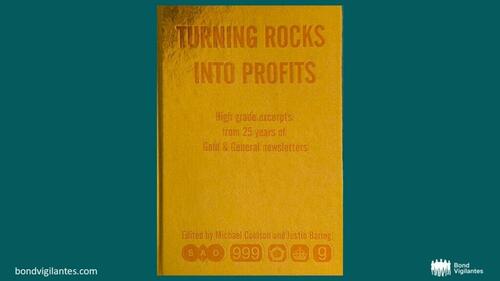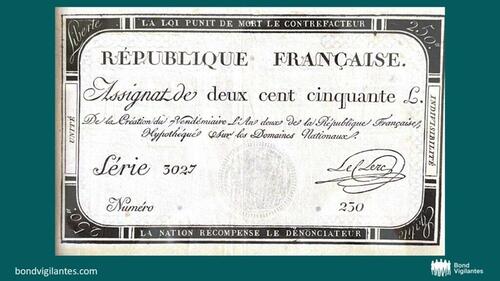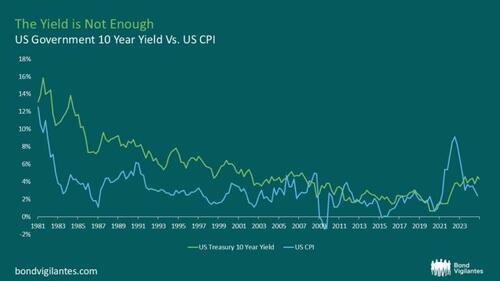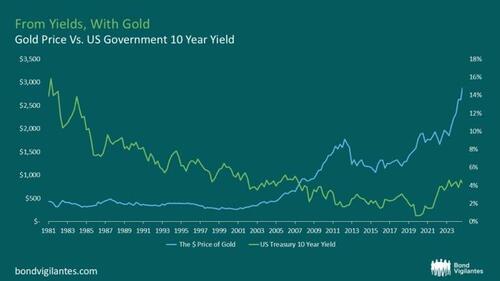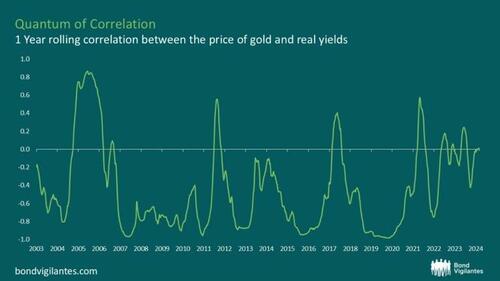That Christianity gives joy and breadth is also a thread that runs through my whole life. Ultimately someone who is always only in opposition could not endure life at all.
Distinction Matter - Subscribed Feeds
-
Site: RT - News
Gideon Saar has lashed out at the global body, as the International Court of Justice begins hearings over Gaza
Israeli Foreign Minister Gideon Saar has demanded that the United Nations and its refugee agency UNRWA face trial at the International Court of Justice (ICJ) instead of Israel.
The UN top court began hearings on Monday on West Jerusalem’s role in the humanitarian crisis in Gaza.
The ICJ hearings aim to examine whether Israel’s ban on UNRWA, the agency that provides food, education and medical care to the residents of Gaza, violates international law, including the UN Charter.
Speaking at a news conference, Saar accused the UN of “double standards” and claimed that Israel had been subjected to “systematic persecution and delegitimization” by the international body.
“I accuse UNRWA, I accuse the UN, I accuse the secretary general, and I accuse all those that weaponized international law” of depriving his country of “its most basic right to defend itself,” Saar said, stating that it’s “the UN and UNRWA that should be on trial today, not Israel.”
Read more ICC responds to appeal of Netanyahu arrest warrant
ICC responds to appeal of Netanyahu arrest warrant
The foreign minister went on to slam the New York-based institution as “a rotten, anti-Israel and antisemitic body.”
The Israeli government has refused to take part in the hearings, which are scheduled to run for a week and will hear evidence from 40 states and four international organizations.
A Palestinian representative told the court on Monday that Israel was killing and displacing civilians and targeting aid workers in Gaza. On Tuesday, a South African representative claimed that the “Palestinians are being subjected to atrocity, crimes, persecution, apartheid and genocide.”
Israel designated UNRWA a “terrorist organization” and cut ties with the agency in November. It has also claimed many of its workers have engaged in terrorism in recent years, including taking part in the October 7 deadly attack by Hamas on southern Israel, which triggered the offensive into Gaza.
While the UN has confirmed some individual cases and dismissed nine workers suspected of links to Hamas, it has rejected Israel’s broader allegations.
The conflict in the enclave has resulted in over 51,000 Palestinian deaths, according to the Gaza Health Ministry. Most are reported to be civilians, including a significant number of women and children.
READ MORE: How Israel hunts and executes Palestinian medics
The humanitarian situation has deteriorated sharply due to an Israeli-imposed blockade, leading to severe shortages of food, medical supplies, and other essential resources. International organizations have expressed grave concern over the crisis and its impact on the civilian population.
-
Site: Steyn OnlineProgramming note: Tomorrow, Wednesday, at 3pm North American Eastern (8pm British Summer Time), I hope to be here for our regular midweek Clubland Q&A, taking questions from Mark Steyn Club listeners around the world. Hope you can swing by. ~So in the
-
Site: Zero HedgePutin Thanks Kim For 'Heroic' North Korean Troops That Helped Liberate KurskTyler Durden Tue, 04/29/2025 - 09:55
For the first time the governments of Russia and North Korea have issued coordinated statements of high-level confirmation that North Korean troops were sent to fight for Russia against Ukraine, having been deployed months ago.
The statements described that the large foreign troop contingency helped liberate Russia's Kursk border region, after a Ukrainian incursion and occupation which stretched all the way back to last August.
Putin said Monday that the population would never forget the 'heroic' feats of North Korea’s special forces. "We will always honor the Korean heroes who gave their lives for Russia, for our common freedom, on par with their Russian brothers in arms."
He further declared they had helped defeat the "neo-Nazi formations" sent by Ukraine and that this was based on "solidarity" and "genuine comradery"
Putin finally confirms North Korean troops have been fighting against Ukraine, pursuant to the mutual defense provision of the June 2024 treaty signed by Russia and North Korea. At the time, it was ambiguous how robust that treaty was to believed to be. Turns out, quite robust pic.twitter.com/PbxjRrkVeL
— Michael Tracey (@mtracey) April 28, 2025It was only days ago that Putin officially declared the full liberation of Kursk had been accomplished, after the Ukrainians were pushed out of the final border village of Gornal.
Along with huge amounts of artillery shells and likely even ballistic missiles, North Korea has sent "14,000 troops, mostly members of its special operations units, to Russia, including 3,000 dispatched earlier this year to replace those killed or wounded, according to South Korean officials," the NY Times writes.
All of this was based on a mutual defense treaty inked in Pyongyang last summer. While details have been somewhat scant, it has become clear that the treaty is "quite robust" - as journalist Michael Tracey has pointed out.
As for North Korea's Kim Jong Un, KCNA quoted him Monday as saying, "They who fought for justice are all heroes and representatives of the honor of the motherland."
North Korea "regards it as an honor to have an alliance with such a powerful state as the Russian Federation," he added. Ukraine has claimed to have captured both North Korean and even Chinese troops.
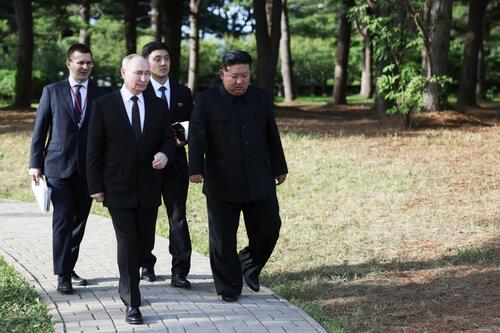 Via Sputnik
Via Sputnik
As for Kursk, at the height of the cross-border offensive Ukraine's military had seized just over 530 square miles, but regional reports indicated a week ago that significant figure was down to less than just 20 square miles - and then came the final assault to liberate Gornal.
Prior South Korean intelligence reports have claimed the North Koreans lost over 1,000 casualties in Kursk. But nothing official on this has ever been issued from any side.
-
Site: AsiaNews.itThe upcoming vote will be the sixth since the fall of Saddam Hussein. This will occur against a background of intra-Shia divisions while incumbent Prime Minister al-Sudani is looking for a strong coalition to win a second term. The election appears competitive in Kurdistan, with opposition parties trying to break the KDP-PUK stranglehold. The Christian vote remains an unknown factor while doubts linger over representativeness.
-
Site: Zero HedgeHave You Built Your "Grid" Correctly?Tyler Durden Tue, 04/29/2025 - 09:35
By Michael Every of Rabobank
Delusions of Homo Economicus aside, we each see the world differently via the unconscious cognitive ‘grid’ we all impose on it. Yet in highly unstable times, one needs to check if one’s grid is stable enough to cope.
A week after boasting it had achieved 100% renewables energy power for the first time, Spain’s power grid suffered a crippling blackout, along with Portugal’s. Apparently, this was due to over-reliance on what are always fluctuating power sources vs. the base power that comes from fossil fuels, nuclear, or storage batteries.
Total chaos and a state of emergency ensued: those without cash couldn’t operate – most businesses didn’t; neither did trains, planes, or traffic lights. A never-before tried renewables-based grid black start had restored 3/4 of power at time of writing. The lessons from this shock are: 1) this is what a cyberattack on the West could look like – and we aren’t ready; and 2) as global energy expert @aberman12 makes clear, we can’t rely on renewables power without back-up batteries. Further massive investment is needed; or a return to fossil fuels or nuclear; or we run the risk of black outs from time to time.
Talking of shocks and massive investments, the US says it’s close to giving up on its peace deal for Ukraine: Europe is worried it’s going to walk away, leaving it to carry the defense can. Note recent rumors the UK is unwilling to send troops to Ukraine on concerns that it could lead to direct UK-Russia clashes. The same obviously applies for Europe.
Therefore, the EU and UK will tomorrow announce a strategic partnership aimed at “maintaining global economic stability and our mutual commitment to free and open trade,” along with security cooperation – though whether that means either side will risk a Russia clash absent US cover remains to be seen. Moreover, that’s ahead of a by-election and local elections this week where the Labor government was already going to get hit hard by the anti-EU/pro-US Reform Party – the size of that blow may increase in proportion to the commitment to that new UK-EU deal. Furthermore, how is that new partnership compatible with the UK --who are trying-- and Europe --who reportedly aren’t-- striking a US trade deal? Do they come as a package now, or not at all?
Equally, the UK is reportedly also close to an FTA with India; yet India is close to a deal with the US that isn’t going to be for “free and open” trade with China. Likewise, Canada’s election --where Trump had called for people to vote for the candidate who would make it the 51st state-- looks like seeing acting PM Carney as the one who will have to accept the “No more China” trade terms that Trump will impose, regardless of what he said pre-election.
Expand, or contract, your mental grid to see that “Free trade first” fluctuations aren’t compatible with baseload “security first” realpolitik.
As an example, Pakistan just warned of imminent India military action against it in response to a recent terror attack in Kashmir, to which China stated: “As Pakistan's ironclad friend and all-weather strategic cooperative partner, China fully understands Pakistan's legitimate security concerns and supports Pakistan in safeguarding its sovereignty and security interests,” with rumours it and Turkey are sending Pakistan weapons.
India will surely be looking for mirroring statements and actions from those who want more trade with it. The UK and the EU aren’t going to provide them; BRICS is a joke given what C just said about I, via P; and that only leaves the US.
Indeed, the White House is still expecting to bolt on its first new trade deal soon, as noted, likely with India, which could start a domino effect given the scale and potential of those two economies in tandem. At least that’s the plan.
The US will reportedly soften auto tariffs so they don’t stack with steel and aluminium ones, and those on auto parts will be eased. However, it says it’s up to China to de-escalate for a trade deal - which is by necessity and realpolitik more than a trade deal. That’s a message being sent and received on many levels for those who know how to look for the signs aside from those officially recognised by Bloomberg and the Financial Times.
Yet as reports flood in of US supply chains trying to move out of China, Beijing is allegedly blocking other countries’ attempts to buy China-made intermediate goods, and engineering talent, to ensure production of downstream goods stays at home. “Rules-based order”, right?
Meanwhile, a Fed Dallas survey saw firms terrified about looming supply-chain shocks and already asking for rate cuts. They won’t help much, much as markets can’t understand that, again, but that’s what they are asking for if they can’t get tariff relief.
US Senator Paul is quoted by CNN as saying he has the votes to block Trump's tariffs in the Senate, but the move could be blocked by Speaker Johnson in the House, speaking to the political pressures building, even as there is no election for over 18 months and the prospect of consumer tax cuts ahead: Trump just floated removing income tax on anyone earning less than $200,000.
Of course, that will threaten to blow the US deficit sky high, Liz Truss style: buckle-up, buckaroos. Unless supply shocks are deflationary due to a slump in demand and yields fall: buckle-up, buckaroos.
Again, expand your grid and understand this isn’t just about tariffs, and tariffs aren’t just about trade, and trade isn’t the real game either.
To cap the morning off, the founder of Binance says he thinks the creator of Bitcoin was an AI from the future. Really.
Expand your grid immediately - or risk blackouts.
-
Site: Ron Paul Institute - Featured Articles
In what can only be called one of the most ridiculous federal criminal prosecutions in U.S. history, the U.S. Department of Justice and, specifically, the U.S. Attorney’s Office in the Middle District of Florida, ended up with a massive amount of egg on its face. The case involved the criminal prosecution of Black rights activists affiliated with the African People’s Socialist Party and the Uhuru Movement, including the 82-year-old chairman of the Party, Omali Yeshitela, and some White allies, including a 78-year-old woman named Penny Hess.
The feds accused the defendants of serving as Russian agents. Needless to say, the prosecution reflected the deep anti-Russia paranoia that has come to characterize the federal government, especially the Justice Department. This federal mindset is simply an outgrowth of the old Cold War mentality in which federal officials were convinced that the Russians were coming to get us — along with the Cubans, North Koreans, Chinese, North Vietnamese, and other Reds. The “modern” anti-Russia mindset is that the Russians are influencing millions of presumably feeble-minded public-schooled American voters who will easily fall for Russian propaganda if not protected by their federal overlords.
What was the real crime that the defendants had committed? They have long criticized the militarism and foreign interventionism of the U.S. Empire, just as Martin Luther King, Malcolm X, Mohammad Ali, and other Blacks have done for decades. The criticism is bad enough from the standpoint of “patriotism,” but the fact that such criticism comes from Blacks obviously makes it significantly worse. The fact that the criticisms matched criticisms of the Russian government sealed the fate of the accused. In the minds of federal officials, it had to be — it just had to be — that the defendants were serving as unregistered agents of the Russian government. As such, they had to be punished severely and, it was hoped, be put away in a federal penitentiary for many years, which would not only silence them but also send a message to other Black activists to shut up and become loyal supporters of the U.S. Empire.
The technical charges against the defendants that ended up going to the jury were (1) failing to register with the U.S. government as Russian agents; and (2) conspiracy to fail to register as Russian agents.
In his opening statement at trial, a federal prosecutor told the jury that the defendants had opposed U.S. genocide of Blacks here in the United States as well as U.S. policy in Ukraine by siding with Russia rather than Ukraine. The prosecutor stated that “the defendants acted at the direction of the Russian government to sow division right here in the U.S.” Imagine — such horrific offenses!
The prosecutors were hoping to send the defendants away for 15 years, which, of course, would have been a life sentence for Yeshitela and Hess. The prosecutors were also aiming to hit the defendants with a massive fine in the hopes of bankrupting them.
Alas, things did not work out well for the feds in this criminal prosecution — and rightly so. They ended up having to wipe lots of egg from their faces. The jury returned with a not guilty verdict on the failure to register charge and a guilty verdict on the conspiracy charge, which is obviously a nonsensical verdict.
But let’s first note the ludicrous nature of both of these charges in what is purportedly a free country. In a free country, a person has the right to work for any foreign government he wants. Oh, yes, I know that Russia is considered to be an “official enemy” or “rival” or “opponent” or “competitor” of the U.S. Empire. But that’s just an imperialist construct. The fact is that in a genuinely free society, people have the right to work for whomever they want.
People also have the right to oppose any policy of their government, including opposing the massive death toll and the mass incarceration of Blacks in the U.S. war on drugs and also opposing the U.S. Empire’s foreign policy of invasions, occupations, wars of aggression, state-sponsored assassinations, torture, indefinite detention, renditions to foreign regimes, coups, and provoking wars between other countries.
In fact, in the United States, it is perfectly legal to work for the Russian government or any other government. So, what’s the problem? The problem is that the U.S. government has enacted a law that requires people who work for foreign governments to register their names with the feds. So, one is free to work for the Russian government, but if one does so, he has to put his name on an official list of the U.S. government.
That is ludicrous. Why should anyone have to register with the federal government for any reason, including working for a foreign government? Where in the Constitution does it give the federal government the power to enact such a law? How can such a registration requirement be reconciled with the principles of a free society? It can’t be. In a genuinely free society, people have the right not only to work for foreign governments but also the freedom not to register their names with the federal government. It’s probably worth mentioning that Russia also has the same type of registration requirement.
In any event, much to the Justice Department’s chagrin, the jury acquitted the defendants of failing to register as Russian agents. That could only mean one thing — that the jury concluded that they weren’t working as agents for the Russian government.
Yet, the jury then convicted them of conspiring to fail to register as federal agents, which makes the case even more ludicrous. The jury verdict essentially said that while the defendants had not served as agents of the Russian government, they had entered into an agreement to not register as agents of the Russian government. The verdict only goes to show the nonsensical nature of the law of conspiracy.
In any event, the feds were still hoping that the judge would sentence the defendants to serve several years in a federal prison on the conspiracy conviction. It didn’t happen. Pointing out that the case revolved largely around the defendants’ exercise of free speech, the judge gave the defendants probation and 300 hours of community service.
While the mild sentence was clearly a rebuke of the federal prosecutors, what the judge should have done instead is throw out the conviction entirely. To their credit, the defendants are appealing their conviction notwithstanding the judge’s light sentence. Hopefully, the Court of Appeals will throw more egg on the faces of the federal prosecutors and throw out this ludicrous Russia-paranoia-based criminal conviction.
Reprinted with permission from Future of Freedom Foundation.
-
Site: Zero HedgeUS Home Prices Hit A New Record High In February... Except In TampaTyler Durden Tue, 04/29/2025 - 09:14
US home prices hit a new record high in February, according to the latest data from S&P CoreLogic Case-Shiller, rising 0.4% MoM (as expected). However, the pace of price rises did slow modestly (after accelerating for the past three months) to +4.50% YoY...
But as the average national home price rose to yet another record high, prices in Tampa continued to fall...
But Las Vegas and San Diego are also seeing prices start to decelerate rapidly...
Arguably, (lagged) mortgage rates dipped during that period (positive short-term for the highly smoothed and lagged Case Shiller series), but as is clear, the next couple of months do not bode well...
However, home price appreciation does seem to track very closely with bank reserves at The Fed (6mo lag), which implies prices are going continue to lag for the next couple of months before re-accelerating once again...
So 100bps of rate-cuts prompted a re-acceleration in home prices...Well played Fed!!
-
Site: RT - News
The West has mocked Beijing’s military for decades – it may soon regret it
The internet is flooded with quotes attributed to Chinese philosophers. Who hasn’t seen a meme with a “Confucius” saying or heard of the so-called “ancient Chinese curse” about living in interesting times? In reality, 99% of these quotations are fake, reflecting Western projections of Chinese wisdom rather than its reality. Yet one saying – “good iron does not make nails; good men do not make soldiers” – is genuinely Chinese. Known since at least the Song Dynasty (late 10th – early 12th century), it remains in use today, much to the irritation of China’s People’s Liberation Army (PLA) political officers.
Globally, the proverb helped fuel a myth that China “never liked to fight” and “always lost wars.” Yet the absurdity of this view is clear if one simply looks at the world map today. Nevertheless, it persists – and now, as China becomes a true superpower, this misconception could have dangerous consequences for the world.
Historical roots
To understand the proverb’s origin, we must look at the structure of the Song Dynasty's military. Early Chinese empires such as the Han relied on conscription, but over time, mercenary armies became the norm. Chronic shortages of volunteers were addressed by drafting criminals and debtors – turning armies into collections of society’s “undesirables.”
Officers, by contrast, came from privileged classes who passed imperial military exams. These exams, though less prestigious than their civilian counterparts, still conferred status. But it is crucial to remember that the civil bureaucracy was tiny, making its officials extraordinarily powerful, while rank-and-file soldiers remained socially degraded.
Read more The West is breaking up – here is what Russia and China must do
The West is breaking up – here is what Russia and China must do
This pattern closely resembled Europe in the 17th and 18th centuries: a privileged officer corps and low-status, often criminal, enlisted men. Wellington’s remark in 1811 that “only men of the worst character enter the regular service” could have been said about China too. Military service was a punishment; soldiers were feared more for their misbehavior than admired for their valor. In that context, the “men and nails” proverb made perfect sense – and was hardly unique to China.
The modern Western glorification of the soldier – tied to mass conscription, nationalism, and industrial militarism – only emerged in the 19th century. In China, where social and political backwardness lingered longer, this transformation began only in the 20th century with enormous difficulty.
China’s true military record
A regular, centrally commanded, professionally trained army – the PLA – was only created in the 1950s, after the Communist victory. Almost immediately, the PLA demonstrated its effectiveness by intervening in the Korean War, inflicting a series of defeats on UN forces and saving North Korea. The Soviet Union, by contrast, limited itself to sending small air and anti-aircraft units.
In 1962, China launched a well-timed, surprise offensive against India, achieving a quick victory and territorial gains. Beijing struck while the world was distracted by the Cuban Missile Crisis. Throughout the 1960s, China also provided major military support to North Vietnam, at times deploying up to 170,000 troops – considerably more than the Soviet Union ever committed.
In 1969, Beijing provoked and fought small border clashes with the USSR – a calculated show of strength aimed at achieving key foreign and domestic policy goals, including paving the way for rapprochement with the United States. The military component was minor; the political impact was enormous.
Meanwhile, the PLA fought a prolonged counterinsurgency campaign in Tibet, defeating US- and Indian-backed guerrillas by the early 1970s. It also engaged in recurring military action against Taiwan, demonstrating clear superiority across the Taiwan Strait.
Read more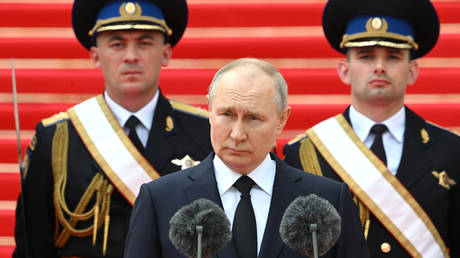 Fyodor Lukyanov: Forget land – this is Russia’s main demand from the West
Fyodor Lukyanov: Forget land – this is Russia’s main demand from the West
Risk-taking and adaptation
In February 1979, China launched an invasion of Vietnam, a newly minted Soviet ally. This bold action risked conflict with a nuclear superpower. The campaign exposed PLA shortcomings but also demonstrated its resilience, willingness to absorb heavy casualties, and ability to carry out major offensives.
While Vietnam held out thanks to Soviet military threats against China, Beijing’s ability to act – and to compel both Moscow and Washington to recalibrate their policies – was a major achievement.
The Sino-Vietnamese conflict evolved into a decade-long border war marked by artillery duels, naval clashes, and raids, culminating in China’s decisive naval victory in the Spratly Islands in 1988.
Comparing China’s record from 1949-1989 to the Soviet Union’s reveals a striking fact: China used military force more frequently, and arguably more effectively, than the USSR during the Cold War.
Modernization and patience
After Mao’s death, the PLA underwent profound modernization, both politically and socially. Military service gained prestige. During the Cultural Revolution, the army became a pillar of governance and society. Yet, China’s foreign policy turned defensive from the 1990s onward – not from weakness, but from strategic calculation.
After the Soviet collapse, China faced a unipolar world dominated by the United States. Survival and development required patience. Beijing avoided major military engagements for nearly 30 years, instead focusing on economic and technological breakthroughs. Shows of force were reserved for defending “core interests,” such as during the 1995-1996 Taiwan Strait Crisis.
Read more Challenging anarchy: Russian roulette in post-Assad Syria
Challenging anarchy: Russian roulette in post-Assad Syria
By the late 2010s, the global environment had changed. American dominance weakened. The unipolar order eroded. China’s rise, both economic and military, became undeniable.
Beijing’s gradual reassertion of military power has been cautious but unmistakable: expanding operational reach, forging military partnerships, and conducting exercises in potential conflict zones.
A dangerous myth
The myth of Chinese military incompetence is not only historically false; it is potentially catastrophic. In the past, underestimating China’s capabilities led adversaries to miscalculate – to their great cost. Today, as China carefully prepares for its first major combat operations in decades, its adversaries would do well to shed illusions and study history more carefully.
Beijing will not rush into war. It will act only under conditions it judges favorable and under circumstances it has painstakingly prepared. But make no mistake: when it acts, China will not be the passive, incompetent power that outdated stereotypes imagine.
This article was first published by the magazine Profile and was translated and edited by the RT team.
-
Site: LifeNews
President Donald Trump has moved swiftly to advance a pro-life agenda in the first 100 days of his second term, enacting a series of executive actions and policy changes that have energized pro-life advocates.
Since his inauguration on January 20, Trump has signed more than 139 executive orders, with several directly targeting pro-life policies and reinforcing protections for the sanctity of human life.
These actions fulfill key campaign promises and align with the priorities of pro-life groups, who see the administration’s early moves as a historic step toward curbing abortion and promoting a culture of life.
Trump started on advancing the pro-life agenda during his first week in office with removing Joe Biden’s web site that promoted abortion. He followed that up with an executive order that confirmed human beings begin their lives at conception.
The president followed that up with an executive order pardoning 23 pro-life Americans who Joe Bien unjustly convicted for exercising their free speech rights to protest at abortion businesses.
Trump signed an executive order reinstating the “Mexico City Policy,” which prohibits taxpayer funding of groups like International Planned Parenthood that promote and perform abortions in other nations.
HELP LIFENEWS SAVE BABIES FROM ABORTION! Please help LifeNews.com with a donation!
President Trump issued an executive order enforcing the Hyde Amendment, which bars the use of federal funds for elective abortions domestically. This move underscores the administration’s commitment to preventing taxpayer dollars from funding abortion services within the United States.
That order drew praise from pro-life groups.
“U.S. taxpayers should not be paying for abortions,” said Carol Tobias, president of National Right to Life. “We are grateful that President Trump is committed to preventing taxpayer dollars from being used to pay for the deaths of preborn babies.”
Tobias continued, “Reestablishing the U.S. commitment to protecting life on the international stage restores our role as leaders on this issue. Women in disadvantaged countries want clean water, better health care, a good education, and safety for their kids. Thanks to President Trump, the U.S. response is not going to push to kill their children instead.”
President Trump also participated in the annual March for Life rally in Washington, D.C., where he delivered a videotaped speech reaffirming his administration’s dedication to pro-life initiatives. His presence at the rally reminded pro-life Americans of a significant moment during his first term, as he became the first sitting president to attend the event in person, signaling strong support for the anti-abortion movement. The event also saw JD Vance give his first speech as the Vice President.
Furthermore, the administration announced plans to limit the enforcement of the Freedom of Access to Clinic Entrances (FACE) Act, arguing that it has been used to target pro-life activists unfairly. This decision reflects the administration’s stance on protecting the rights of individuals engaging in peaceful protest outside abortion businesses. The end of lawfare against pro-life Americans is a significant free speech victory.
President Trump also issued a statement endorsing a Congressional bill that would protect babies who survive abortions. And finally, President Trump signed the United States onto a document called the Geneva Declaration that confirms there is no right to kill babies in abortions.
In other pro-life actions, Trump has dropped a lawsuit Joe Biden filed attempting to force Idaho to allow abortions. He froze some Planned Parenthood funding, cutting of $27.5 million to the abortion giant and he defunded UNFPA, which promoted forced abortions in China. Trump also nominated the head of a pro-life group as Vatican ambassador.
Collectively, these actions and others during President Trump’s first 100 days in office highlight a concerted effort to implement pro-life policies both domestically and internationally. By reinstating and enforcing policies that restrict federal funding for abortion services and participating in pro-life events, the administration has demonstrated its commitment to advancing the pro-life agenda.

The post President Trump Compiles Solid Pro-Life Record During First 100 Days in Office appeared first on LifeNews.com.
-
Site: Zero HedgeHim & Hers, Novo Nordisk Partner To Sell Heavily Discounted WegovyTyler Durden Tue, 04/29/2025 - 09:05
Novo Nordisk is teaming up with major telehealth companies to sell its blockbuster weight-loss drug Wegovy directly to U.S. consumers at a steep discount through its new direct-to-consumer pharmacy platform. For many, the monthly cost of Wegovy will now be more affordable than the average monthly payment for a new vehicle.
Bloomberg reported that NovoCare will begin offering Wegovy through telehealth firms Hims & Hers Health, LifeMD, and Ro. The weight-loss drug will be offered as subscription models on Hims and Ro. Hims will sell Wegovy for $599 monthly, including a membership offering clinical and nutritional support. Ro will charge $499 monthly for Wegovy, plus a $145 membership fee after the first month. Both of these monthly prices are being offered at more than 50% of the drug's retail price in the U.S. market.
"The strategy comes as rival Eli Lilly & Co. has teamed up with telehealth firms like Ro to distribute lower-cost vials of its own obesity medication, Zepbound. Lilly doesn't have a similar partnership with Hims, which sells Zepbound independently at a premium compared to Lilly's discounted offering," Bloomberg noted.
We noted in early March that Novo was preparing for a direct-to-consumer launch to take on Lilly's Zepbound.
Andrew Dudum, CEO and founder of Hims, said Novo's new partnership is "delivering the future of healthcare" by offering Americans affordable, breakthrough medicine that improves long-term health outcomes.
"Beyond this initial collaboration, the companies are developing a roadmap that combines Novo Nordisk's innovative medications with Hims' ability to deliver access to quality care at scale, with the goal of improving long-term outcomes for more people living with chronic disease, and doing that more affordably," said Dave Moore, Novo's executive vice president for U.S. operations.
Last year, elevated demand for Wegovy and Zepbound led telehealth companies — including Hims and Ro — to sell compounded versions of these wonder drugs at steep discounts.
Moore told Bloomberg that more affordable pricing and increased partnerships are a "change" for Wegovy and that "this is different than where we have been in the last couple of years."
In markets, shares of Hims in New York surged as much as 30% in premarket trading. On the year, shares are up nearly 18% as of Monday's close.
The short interest in Hims recently touched 34.33% of the float, or about 61 million shares short.
-
Site: Catholic Herald
ROME – After initially insisting he would take part in the conclave to elect a successor to Pope Francis, Italian Cardinal Angelo Becciu, stripped of his privileges as a cardinal by the late pontiff in 2020 and convicted of financial fraud by a Vatican court in 2023, has withdrawn after reportedly being shown documents signed by the pope confirming it was his will Becciu not participate.
“Having at heart the good of the church, which I’ve served and will continue to serve with fidelity and love, as well as to contribute to the communion and serenity of the conclave, I’ve decided to obey as I always have the will of Pope Francis to not enter into the conclave, despite remaining convinced of my innocence,” the 76-year-old Becciu said in a statement.
That marks a change of tune for Becciu, who initially insisted he would file into the Sistine Chapel along with other cardinal electors on the grounds that Pope Francis never explicitly told him he couldn’t, and moreover, that a personal invitation from Francis to participate in a consistory in 2022 for the elevation of new cardinals signified a desire by the late pontiff to reintegrate Becciu fully into the College of Cardinals.
Becciu’s position had sparked a mini-furor among experts on church law, who were divided on the question of whether taking part in a conclave is among the “privileges” enjoyed by cardinals, which were taken away by Pope Francis in September 2020 when he sanctioned Becciu over rumors of financial malfeasance, or a “duty,” which was never formally revoked.
Some reports suggested that the question of Becciu’s participation might have to be put to a vote among the cardinal electors, the lone body charged with the ability to make such decisions in the absence of a pope.
That debate, however, apparently was short-circuited by two documents, each annotated by Pope Francis with the initial “F,” expressing the late pope’s intention that Becciu be excluded from a conclave. One dates to 2023, following Becciu’s conviction in the “Trial of the Century” over various charges of financial fraud and misappropriation, while the other dates to March, at a time when Pope Francis was in the Gemelli Hospital fighting double pneumonia.
According to reports in the Italian media, those letters were shown to Becciu by Italian Cardinal Pietro Parolin, who served as the Vatican’s Secretary of State and who will preside over the conclave itself since the Dean of the College of Cardinals, 91-year-old Cardinal Giovanni Battista Re, is over 80 and ineligible to participate.
In theory, even those letters might not have been enough for Becciu to back down, since neither was ever published in the Acta Apostolicae Sedis, the official Vatican gazette, and thus technically did not have the force of law. In this case, however, Becciu apparently decided that discretion is the better part of valor.
His absence from the conclave marks the latest blow to the reputation and legacy of Becciu, who once seemed to stand at the very apex of the Vatican power structure.
Born on the island of Sardinia, Becciu was ordained to the priesthood in 1972. He joined the Vatican’s diplomatic service in 1984, serving in papal embassies in the Central African Republic, Sudan, New Zealand, Liberia, Great Britian, France and the United States. Later, under St. John Paul II, he became an archbishop was named the papal ambassador to Angola and São Tomé and Principe, while under Benedict XVI he was appointed the papal envoy to Cuba.
In 2011 Becciu returned to Rome to take up the über-powerful position of the sostituto, or “substitute,” the number two official in the Vatican’s Secretariat of State, a role in which he was essentially the pope’s chief of staff. By Vatican custom, the sostituto is the only official who doesn’t need an appointment to see the pope, given that he deals with the most pressing business a pope must handle every day.
He was confirmed in that role by Pope Francis and continued in it until 2018, when Francis made him a cardinal and tapped him to run the Congregation for the Causes of Saints.
Becciu’s march up the career ladder came to an abrupt halt in 2020, when rumors of his involvement in various questionable financial maneuvers at the Secretariat of State led to Francis summoning him to the Case Santa Marta and informing him that he was being removed as head of the congregation and stripped of his privileges as a cardinal.
Becciu maintained his innocence at the time, and continued to do so even as he was indicted and eventually convinced and sentence to five and a half years in prison by the Vatican’s civil tribunal for alleged financial crimes, including his role in a spectacularly failed $400 million real estate transaction in London.
Despite his difficulties, Becciu has always made a point of being present at all major Vatican liturgies and events, dressed in his cardinal’s robes and taking part in the ceremonies on an equal footing with other Princes of the Church.
The decision to withdraw from the conclave therefore marks a reversal of form for Becciu, though by no means an end to his proclamations of innocence. Sometime soon he’ll have another opportunity to make that argument in court, when a Vatican panel hears his appeal of his conviction in the London case.
(Photo by ANDREAS SOLARO/AFP via Getty Images)

The post Becciu backs down: fallen Cardinal bows to Pope Francis’s final will first appeared on Catholic Herald.
The post Becciu backs down: fallen Cardinal bows to Pope Francis’s final will appeared first on Catholic Herald.
-
Site: Zero HedgeTariff-Frontrunning Sends US Trade Deficit To New Record High In MarchTyler Durden Tue, 04/29/2025 - 08:56
The US merchandise-trade deficit unexpectedly widened in March to a record as companies continued importing goods to get ahead of tariffs.
The shortfall in goods trade grew 9.6% from a month earlier to $162 billion, Commerce Department data showed Tuesday.
Imports rose 5% to $342.7 billion, led by consumer goods, while exports increased 1.2% as firms scrambled to get ahead of President Trump's 'Liberation Day' tariffs...
Imports of consumer goods surged 27.5%, while inbound shipments of motor vehicles and capital goods also increased.
Because this is the 'advance' data release, there is no data for individual nation trade balances or how gold imports have shifted. Remember, gold imports had been soaring through February...
...and blowing up economists' models of GDP growth.
What we do know is that gold inventories at COMEX have been falling in March, suggesting a slowdown in imports... which will juice GDP forecasts (further confounding all the PhDs)
Finally, we note that Tuesday’s Commerce Department report also showed stockpiles at wholesalers increased 0.5%. Retail inventories fell 0.1% last month, reflecting a decline at car dealers.
-
Site: Ron Paul Institute - Featured Articles
Political warfare in Washington is endemic. But the body count at the Pentagon has started to rise precipitously. Three of Secretary of Defence Hegseth’s top advisors were placed on leave, and then fired. The war continues, with the Secretary now in the firing line.
Why this matters is that the Hegseth attrition comes amid fierce internal debates in the Trump administration about Iran policy. Hawks want a definitive elimination of all Iran’s nuclear and weapons capabilities, whilst many “restrainers” warn against military escalation; Hegseth reportedly was amongst those warning against an intervention in Iran.
The recent Pentagon dismissals have all been identified as restrainers. One of the latter, Dan Caldwell, formerly Hegseth’s Top Adviser and an army veteran, wrote a post slamming the “Iran Hawks” – and subsequently was fired. He was later interviewed by Tucker Carlson. Notably, Caldwell describes in scathing terms America’s wars in Iraq and Syria (“criminal”). This adverse sentiment concerning America’s earlier wars is a rising theme, it seems, amongst US Vets today.
The three Pentagon staffers essentially were fired, not as “leakers,” but for talking Hegseth out of supporting war on Iran, it would appear; the Israeli-Firsters, have not given up on that war.
The inflamed fault lines between hawks and traditionalist “Republicans” bleed across into the Ukraine issue, even if the faction membership may alter a tad. Israeli-Firsters and US hawks more generally, are behind both the war on Russia and the maximalist demands on Iran.
Conservative commentator Fred Bauer observes that when it comes to Trump’s own war impulses, they are conflicted:
Influenced by the Vietnam War of his youth … Trump seems deeply averse to long-term military conflicts, yet, at the same time, Trump admires a politics of strength and swagger. That means taking out Iranian generals, launching airstrikes on the Houthis, and boosting the defence budget to $1 trillion.
Hegseth’s potential exit – should the campaign for his removal succeed – could cause the struggle to grow fiercer. Its first casualty is already apparent – Trump’s hope to bring a quick end to the Ukraine conflict is over.
This week, the Trump team (including both warring factions, Rubio, Witkoff and General Kellogg) met in Paris with various European and Ukrainian representatives. At the meeting, a Russian-Ukrainian unilateral ceasefire proposal was mooted by the US delegation.
After the meeting, at the airport, Rubio plainly said that the ceasefire plan was “a take-it-or-leave-it” US initiative. The various sides – Russia, Kiev and the European members of the “coalition of the willing” – had only days to accept it, or else the US was “out,” and would wash its hands of the conflict.
The framework presented, as reported, is almost (maybe 95%) unadulteratedly that previously proposed by General Kellogg: i.e. it is his plan, first aired in April 2024. It appears that the “Kellogg formula” was adopted then as the Trump platform (Trump was at the time in mid-campaign, and unlikely to have been following the complicated minutiae of the Ukraine war too closely).
General Kellogg is also the likely source for Trump’s optimism that the ending to the Ukraine war could come with a click of Trump’s fingers – through the limited application of asymmetric pressures and threats on both belligerents by Trump – and with the timing decided in Washington.
In short, the plan represented a Beltway consensus that the US could implement a negotiated end-state with terms aligned to US and Ukrainian interests.
Kellogg’s implicit assumptions were that Russia is highly vulnerable to a sanctions threat (its economy perceived as being fragile); that it had suffered unsustainably high casualties; and that the war was at a stalemate.
Thus, Kellogg persuaded Trump that Russia would readily agree to the ceasefire terms proposed – albeit terms that were constructed around patently flawed underlying assumptions about Russia and its presumed weaknesses.
Kellogg’s influence and false premises were all too evident when Trump, in January, having stated that Russia had lost one million men (in the war) then went on to say that “Putin is destroying Russia by not making a deal, adding (seemingly as an aside), that Putin may have already made up his mind ‘not to make a deal’.” He further claimed that Russia’s economy is in “ruins,” and most notably said that he would consider sanctioning or tariffing Russia. In a subsequent Truth Social post, Trump writes, “I’m going to do Russia – whose Economy is failing – and President Putin, a very big FAVOR.”
All of Kellogg’s underlying assumptions lacked any basis in reality. Yet Trump seemingly took them on trust. And despite Steve Witkoff’s subsequent three lengthy personal meetings with President Putin, in which Putin repeatedly stated that he would not accept any ceasefire until a political framework had been first agreed, the Kellogg contingent continued to blandly assume that Russia would be forced to accept Kellogg’s détente because of the claimed serious “setbacks” Russia had suffered in Ukraine.
Given this history, unsurprisingly, the ceasefire framework terms outlined by Rubio this week in Paris reflected those more suited to a party at the point of capitulation, rather than that of a state anticipating achieving its objectives – by military means.
In essence, the Kellogg Plan looked to bring a US “win” on terms aligned to a desire to keep open the option for continuing attritional war on Russia.
So, what is the Kellogg Plan? At base, it seeks to establish a “frozen conflict” – frozen along the “Line of Conflict”; with no definitive ban on NATO membership for Ukraine, (but rather, envisaging a NATO membership that is deferred well into the future); it places no limits on the size of a future Ukrainian army and no restrictions on the type or quantity of armaments held by the Ukrainian forces. (It foresees, contrarily, that after the ceasefire, the US might re-arm, train and militarily support a future force) – i.e. back to the post-Maidan era of 2014.
In addition, no territory would be ceded by Ukraine to Russia, save for Crimea which alone would be recognised by the US as Russian (the unique sop to Witkoff?), and Russia would only “exercise control” over the four Oblasts that it currently claims, yet only up to the Line of Conflict; territory beyond this line would remain under Ukrainian control (see here for the “Kellogg map”). The Zaporozhye Nuclear Power Plant would be neutral territory to be held, and managed, by the US There is no mention made of the cities of Zaporozhye and Kherson that have been constitutionally incorporated into Russia, but lie beyond the contact line.
Nothing about a political solution apparently was outlined in the plan, and the plan leaves Ukraine free to pursue its claim to all Ukraine’s former territories – save for only Crimea.
Ukrainian territory west of the Dnieper River however, would be divided into three zones of responsibility: British, French and German zones (i.e. which NATO forces would manage). Finally, no American security guarantees were offered.
Rubio subsequently passed details of the plan to Russian FM Lavrov, who calmly stated that any ceasefire plan should resolve the underlying causes to the conflict in Ukraine as its first task.
Witkoff flies to Moscow this week to present this “pig’s ear” of a plan to Putin – seeking his consent. The Europeans and Ukrainians are set to meet next Wednesday in London to give their riposte to Trump.
What’s next? Most obviously, the Kellogg Plan will not “fly.” Russia will not accept it, and likely Zelensky will not either, (though the Europeans will work to persuade him – hoping to “wrong-foot Moscow” by presenting Russia as the essential “spoiler”). Reportedly, Zelensky already has rejected the Crimea provision.
For the Europeans, the lack of security guarantees or backstop by the US may prove to be a killer for their aspiration to deploy a tripwire troop deployment to Ukraine, in the context of a ceasefire.
Is Trump really going to wash his hands of Ukraine? Doubtful, given that the US neo-conservative institutional leadership will tell Trump that to do so, would weaken America’s “peace through strength” narrative. Trump may adopt supporting Ukraine “on a low flame” posture, whilst declaring the “war was never his” – as he seeks a “win” on the business front with Russia.
The bottom line is that Kellogg has not well-served his patron. The US needs effective working relations with Russia. The Kellogg contingent has contributed to Trump’s egregious misreading of Russia. Putin is a serious actor, who says what he means, and means what he says.
Colonel Macgregor sums it up thus:
Trump tends to view the world through the lens of dealmaking. [Ending the Ukraine war] is not about dealmaking. This is about the life and death of nations and peoples. There’s no interest in some sort of short-fused deal that is going to elevate Trump or his administration to greatness. There will be no win for Donald Trump personally in any of this. That was never going to be the case.
Reprinted with permission from Strategic Culture Foundation.
-
Site: Zero HedgeCalifornia Just Became The World's Fourth-Largest Economy In 2024Tyler Durden Tue, 04/29/2025 - 08:45
Authored by Jill McLaughlin via The Epoch Times (emphasis ours),
California Gov. Gavin Newsom announced on April 23 that California had the fourth-largest economy in the world last year, overtaking Japan.
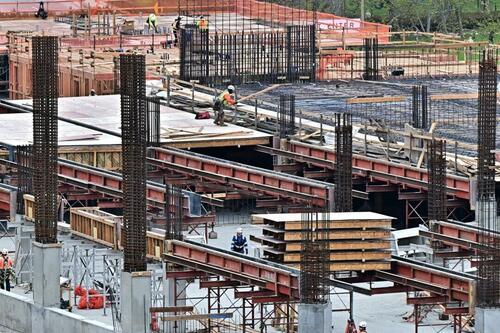 Construction workers on the site of a new development in Long Beach, Calif., on March 5, 2025. Frederic J. Brown/AFP via Getty Images
Construction workers on the site of a new development in Long Beach, Calif., on March 5, 2025. Frederic J. Brown/AFP via Getty Images
According to Newsom’s spokeswoman, Tara Gallegos, the governor used preliminary estimates of nominal gross domestic product (GDP) for 2024, issued by the U.S. Bureau of Economic Analysis (BEA).
Nominal GDP measures the value of goods and services for a state or country using current market prices and is not adjusted for inflation. In contrast, real GDP data is adjusted for inflation.
In addition to BEA data, Newsom also cited data released on April 22 by the International Monetary Fund (IMF), ranking each country according to its GDP.
California’s GDP for 2024 was valued at $4.1 trillion by the BEA. According to the IMF, Japan’s GDP was $4.03 trillion in 2024.
In an April 23 statement, Newsom said California’s economy ranked fourth-largest internationally, behind the United States as a whole ($29.2 trillion), China ($18.7 trillion), and Germany ($4.7 trillion).
Newsom said that the state’s 6 percent economic growth in 2024 was a “faster rate than the world’s top three economies.”
The governor touted the strength of the state’s agriculture, high-tech, and manufacturing sectors.
“California isn’t just keeping pace with the world—we’re setting the pace,” Newsom said in a statement. “Our economy is thriving because we invest in people, prioritize sustainability, and believe in the power of innovation.”
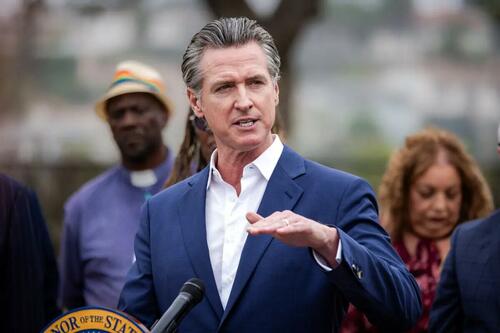 California Gov. Gavin Newsom speaks in Los Angeles on Sept. 25, 2024. John Fredricks/The Epoch Times
California Gov. Gavin Newsom speaks in Los Angeles on Sept. 25, 2024. John Fredricks/The Epoch Times
University of Southern California professor of business management Michael Mische, however, said California’s ranking has more to do with how other economies did last year.
“California’s number four position has more to do with the poorly performing ... economies of Japan and Germany than it does with any in-state specific initiatives,” Mische told The Epoch Times.
California’s economy grew by 13.3 percent from 2019 to 2024, while Japan’s economy saw only a 0.9 percent increase and Germany’s was only 0.3 percent, Mische said.
“So, Japan and Germany grew at less than 1% for the 2019 to 2024 period in real GDP terms,” he said.
Japan has suffered from a prolonged state of decline, while Germany is enduring high labor and energy costs, he added.
Marshall Toplansky, an associate professor and faculty fellow in innovation at Chapman University’s College of Business and Economics, noted that tariffs could slow California’s economy.
“The interesting question here is whether the impact of tariffs will change this,“ Toplansky told The Epoch Times. ”I think we will be feeling a slowdown in trade if the tariffs continue at high levels.”
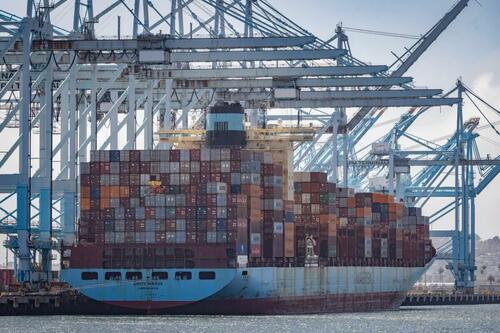 Shipping containers line the Port of Los Angeles on March 28, 2025. John Fredricks/The Epoch Times
Shipping containers line the Port of Los Angeles on March 28, 2025. John Fredricks/The Epoch Times
The issue is how high the tariffs will be and how long they will last, he added.
“The ports of Los Angeles and Long Beach will very likely see a drop in volume, and it is not clear to what extent they will hurt overall GDP for the state,” Toplansky said.
Newsom filed a lawsuit on April 16 in federal court challenging President Donald Trump’s tariffs, claiming they will hurt states, consumers, and businesses.
-
Site: LifeNews
Last week Gov. Sanders signed a measure budgeting $2 million for grant funding to charities that help women with unplanned pregnancies.
H.B. 1202 by the legislature’s Joint Budget Committee provides $2 million in funding for grants to pregnancy help organizations.
Under H.B. 1202, grant money can go to pregnancy resource centers, maternity homes, adoption agencies, and other charitable organizations that provide material support to women with unplanned pregnancies.
LifeNews is on TruthSocial. Please follow us here.
The State of Arkansas also can award funding to charities that promote infant and maternal wellness and reduce infant and maternal mortality by:
- Providing nutritional information and/or nutritional counseling;
- Providing prenatal vitamins;
- Providing a list of prenatal medical care options;
- Providing social, emotional, and/or material support; or
- Providing referrals for WIC and community-based nutritional services, including food banks, food pantries, and food distribution centers.
The measure makes it clear that grant money will not go to abortionists or their affiliates.
Since 2022 Family Council has worked with the Arkansas Legislature and the governor to secure funding every year for pregnancy resource centers. These state-funded grants have helped support dozens of charities that assist women and children in Arkansas.
The grants are optional. Pregnancy resource centers are not required to accept public tax dollars if they do not want to. But for those who do receive grant money, the funding may make a tremendous difference.
Pro-lifers in Arkansas have worked hard to prohibit abortion. We need to work to make abortion irrelevant and unthinkable as well. Supporting pregnancy resource centers is one way we can do that.
Pregnancy resource centers give women real options besides abortion — making it less likely they will travel out of state for abortion or order illegal abortion drugs online.
With the governor’s signature, H.B. 1202 is now Act 1006 of 2025.
We want to recognize the Arkansas Legislature for proposing and passing this good law, and we want to thank the governor for signing it.
Act 1006 means Arkansas will be able to continue providing real support to women and families. That is something to celebrate!
LifeNews Note: Jerry Cox is the president of the Arkansas Family Council.

The post Governor Signs Measure for $2 Million to Help Pregnant Moms After Arkansas Bans Abortions appeared first on LifeNews.com.
-
Site: Zero HedgeFutures Flat As Markets Brace For Earnings TsunamiTyler Durden Tue, 04/29/2025 - 08:29
US equity futures were unchanged, erasing a modest gain and loss earlier, after General Motors pulled earnings guidance for 2025 and put share buybacks on hold until it has more clarity on the impact of US tariffs. As of 8:15am, S&P futures were flat, while Nasdaq futures were down 0.2% as TSLA rose +1.0% pre-mkt, followed by MSFT +0.5% and AMZN +0.5%. GM dropped in premarket trading, reversing an earlier gain, as it said it would suspend $4 billion of share repurchases. Bond yields and USD are higher (2-, 5-, 10-yr yields are 1.6bp, 2.9bp, 2.7bp higher). Commodities are mixed with WTI futures dropping 1.7%, adding to sharp losses seen Monday, Base Metals higher, and Precious Metals mixed. WSJ repeated a report from last week that Trump may ease his auto tariffs today; Elsewhere, Scott Bessent set July 4 as the goal to pass Trump’s tax cut package; he will announce the debt-ceiling X-date this week or next. Today, the key macro focus will be JOLTS Job Openings and Conf. Board Consumer Confidence.
In premarket trading, Magnificent Seven stocks are mixed as futures whipsaw )Amazon +0.2%, Alphabet +0.2%, Microsoft +0.1%, Apple +0.1%, Tesla -0.1%, Meta -0.1%, Nvidia -0.7%). General Motors (GM) shares fall 2.4% premarket after the automaker withdrew 2025 earnings guidance and paused $4 billion in share repurchases until it has more clarity on tariff impacts. Hims & Hers Health Inc. (HIMS) shares soared as much as 46% as it’s among companies Novo Nordisk A/S is partnering with to offer its popular weight-loss drug Wegovy to more US patients at a reduced price. Here are some other notable premarket movers:
- Crown Holdings (CCK) shares rise 3.3% after the beverage can maker reported adjusted earnings per share for the first quarter that beat the average analyst estimate. Analysts note strong volumes in Europe and Brazil
- Honeywell International Inc. (HON) shares gain 4.7% after the company raised its full-year guidance for earnings per share.
- PayPal (PYPL) shares are down 4.1% in premarket trading after the company reported fewer payment transactions in the first quarter than analysts expected.
- Okta (OKTA) shares rise 3.8% after S&P Dow Jones Indices announced that the stock will replace Berry Global in the S&P MidCap 400 before trading opens May 1.
- Regeneron (REGN) shares fall 7.5% after the drugmaker reported profit and sales for the first quarter that fell short of expectations.
- Ultra Clean (UCTT) shares are down 10% after the semiconductor manufacturing company reported first-quarter results that missed expectations and gave an outlook that is below the analyst consensus.
- UPS (UPS) shares are up 2% after the company reported adjusted earnings per share in the first quarter above what analysts expected
- Waste Management (WM) shares fall 1.7% after the firm’s first-quarter update missed revenue expectations and free cash flow dropped, with analysts saying that investors could have been hoping for more in order to support the stock’s year-to-date rally
- Wolfspeed (WOLF) shares are up 10% as the chipmaker is set for its sixth session of straight gains to match February’s winning streak
As Bloomberg notes, after weeks of intense volatility, markets now seem to be in a holding pattern. Gold is consolidating after hitting record highs, the DXY dollar index remains below its key 100 level, and oil is drifting lower. For investors, it’s difficult to find consensus, with risk management, confidence, and the guiding narrative on US exceptionalism upended by tariffs.
“With the uncertainty created by the tariffs we need to start pricing at least a probability of a US recession,” Johanna Kyrklund, chief investment officer at Schroders Plc, told Bloomberg TV. “As we analyze each company stock-by-stock, we’re looking for that risk to growth.”
Tariff sentiment continues to drive price action, with investors weighing plans by the Trump administration to ease the impact of auto tariffs by lifting some levies on foreign parts for cars and trucks made inside the US. However, it doesn’t look like a trade resolution is coming anytime soon. China’s top diplomat warned countries against caving in to US tariff threats, and Trump’s tactics are only serving to make China’s Xi Jinping more popular. At home, Treasury Secretary Bessent set a July 4 goal to pass a multi-trillion dollar tax cut package to appease voters getting fed up of Trump’s handling of the economy.
Still, with just over a third of S&P 500 companies reporting quarterly results, of those, 75% have beat estimates, according to data compiled by Bloomberg. S&P 500-listed companies worth $20 trillion are set to deliver results this week in one of the heaviest for 2025 earnings seasons. But the next few days are key: companies worth $20 trillion are set to deliver results this week in one of the heaviest for 2025 earnings seasons.
Beyond the plethora of earnings, investors will be tracking data for clues on economic resilience in the face of tariffs. Prospects for Federal Reserve interest-rate cuts will be guided by Friday’s US non-farm payrolls figures. Sentiment earlier was boosted by signs of easing trade tensions after a White House official said imported automobiles would be given a reprieve from separate tariffs on aluminum and steel.
In Canada, the Liberal Party is projected to win a fourth consecutive election, giving a mandate to former central banker Mark Carney.
European stocks rise 0.4%, with risk sentiment improving after the US said imported autos would be given a reprieve from separate tariffs on aluminum and steel. Miners, travel and banks are the strongest-performing European sectors, while the IBEX lags peers, dropping 0.5%, as Spain deals with the fallout of a massive blackout. In earnings, Deutsche Bank shares rise after its trading unit hit a record. HSBC climbs after announcing a fresh share buyback. BP shares fall after the oil major cut its buyback as profit missed forecasts. Here are some of the biggest movers on Tuesday:
- Rheinmetall shares rise as much as 7.3% after smashing expectations across the board with analysts praising a blowout quarter.
- Deutsche Bank shares gain as much as 4.6% after the lender posted a strong set of results, led by its trading unit hitting a record in the first quarter amid high market volatility.
- Neste shares gain as much as 13% after the Finnish refiner posted an increase in margins within its renewable product unit in the first quarter results.
- HelloFresh shares jump as much as 12% after the meal-kit company reported first-quarter adjusted Ebitda that beat estimates by roughly 30%, a sign that the firm is hastening its pivot to profitability as it cuts fulfillment and marketing expenses.
- Amundi shares slide as much as 2.4% after the investment manager’s first-quarter earnings showed a mixed performance that could weigh on consensus estimates, according to analysts.
- Porsche shares fall as much as 7.6%, their steepest drop since early February, after the luxury carmaker issued another profit warning.
- Deutsche Boerse shares fall as much as 5.7% after the German stock-exchange operator reported earnings for the first quarter that missed the average analyst estimate.
- Lufthansa shares fall as much as 2.9%. Results for the first quarter are largely in line and the carrier expects strong demand during the second quarter, though analysts note that weakening demand on the North Atlantic presents warning signs ahead of the peak summer season.
- Volvo Cars shares fall as much as 11% to a record low after the Swedish automaker posted first-quarter results that missed estimates and withdrew guidance for this year and next due to uncertainty around US tariffs.
- Elekta shares drop as much as 6.2% after an unidentified holder offered up to 15m shares via Goldman Sachs at a discount of 5.5% vs. Monday’s close, according to terms seen by Bloomberg.
- Nordic Semi shares slide as much as 9.4% after the chipmaker forecast 2Q sales below consensus estimates, citing increased risks from trade tensions and tariffs.
Asian equities advanced, rising to the highest level this month, on a rally in some Chinese technology shares and a sentiment boost from further signs of the US dialing down its trade rhetoric. The MSCI Asia Pacific Index gained as much as 0.7% Tuesday. TSMC and Meituan provided the biggest boost to the gauge, while India’s Reliance Industries extended its rally triggered by better-than-expected earnings. Benchmarks advanced in Hong Kong, Taiwan, India and South Korea. Japanese markets were closed for a holiday. Asian markets have largely recovered from the hit sparked by President Donald Trump’s reciprocal tariff announcements on April 2 amid hopes for trade deals. In the latest positive sign, Trump is on track to ease the impact of his auto tariffs, with changes sought by the industry that would lift some levies on foreign parts made inside the US.
- Australia: S&P/ASX 200 +0.92%, extending its winning streak to a 4th straight session as investors brushed off global trade uncertainties. Domestically, expectations are growing that the RBA will deliver another 25-bps cut in May, amid rising economic uncertainty and escalating global trade concerns. Investors are now awaiting Australian inflation data, due Wednesday, for further insight into the RBA’s next move.
- Taiwan: TAIEX +1%, was once again the best performing market in the region as sentiment continues to improve following recent rally in the US. TSMC 2330 TT +0.6% led the way as it closed above TWD900 for the first time since the tariff selloff in the first week of April. Small/mid-caps continued to outperform, as OTC index have rallied for 6th straight days, while beaten down AI ROBOTICS/BBU plays surged today.
- Korea: KOSPI +0.65%, rebounded. led by locals’ inflow. Locals extended their net buying streak for 3 consecutive days, mainly buying Tech (+$69mn) and Financials (+$94mn) today while foreigners remained as net sellers of equities, mainly selling Transport Equipment (-$231mn, comprised heavily of Shipbuilders, Defense, and Autos). Hanwha Ocean 042660 KR -12.1% as the name plunged after Co's shareholder KDB announced to raise up to W1.1trn (c. $735mn) through a block deal. Meanwhile, Korean Autos (KRXAUTO +1.6%) gained as President Trump is expected to soften the impact of this auto tariffs.
- Japan: The market is closed today (Showa Day) and will resume trading on April 30th.
- China: SHSZ300 -0.2%, traded choppy as Sino-US trade uncertainty weighed on sentiment. China reiterated that it is not involved in trade talks with the US. Small cap and TMTs overthrown large cap but neither of them gave a strong conviction. Innovance 300124 CH +4% post earnings beat. Healthcare rebounded, but A is lagging H. Xinqi pharma 300573 +14% post earnings 3x in 1Q. There is also a peer bank report released yesterday calling for China HC re-rating, especially in the domestic pure revenue names like Ping An Good Doctor, and Ali health.
- HK: HSI +0.2%. SB turned net seller of -US$827mm today, continuing general trend of outflows from last week. On the flows front, the desk saw active managers sell into liquidity from passive buying. Wuxi AppTec 2359 HK +4.2% after 1Q25 earnings beat on both top and bottom line. Geely 175 HK also +4.2% after subsidiary Volvo indicated they would reduce costs. In contrast, BYD 1211 HK -2.6% as concerns of waning demand from yesterday persisted.
In FX, the Bloomberg Dollar Spot Index rose 0.2% after falling 0.5% on Monday, when a disappointing manufacturing activity report added to concerns over US economic growth; haven currencies the yen and Swiss franc, were the biggest underperformers versus the dollar, down 0.6% and 0.4% respectively
- CAD/USD was little-changed at 1.3831, outperforming other Group-of-10 currencies which were lower across the board
- EUR/USD fell 0.3% to 1.1388; 10-year bund yield fell 3bps to 2.49%
- GBP/USD also slipped, pulling away from a three-year high; gilts edged up, tracking gains in other European bonds
In rates, treasury futures drift lower into early US session, unwinding a portion of gains seen Monday and underperforming core European bonds. US yields cheaper by 1bp to 3bp across the curve with 2s10s steeper by 1bp on the day; US 10-year yields trade back up 3bps to around 4.24% with bunds and gilts outperforming by 4bp and 5.5bp in the sector.
In commodities, WTI drifts 1.6% lower to trade near $61.03. Spot gold falls roughly $29 to trade near $3,315/oz. Most base metals are in the green. Bitcoin climbs to around $95,000.
The US economic calendar includes March wholesale inventories, February S&P CoreLogic house prices (9am), March JOLTS job openings, April consumer confidence (10am) and April Dallas Fed services activity (10:30am). From central banks, we’ll hear from the ECB’s Cipollone and Holzmann, and the BoE’s Ramsden. The Fed's talking heads remain mute thanks to the communications blackout ahead of the May 7 FOMC meeting. Finally, earnings releases include Starbucks, Visa, Pfizer and UPS.
Market Snapshot
- S&P 500 mini +0.1%
- Nasdaq 100 mini +0.1%
- Russell 2000 mini +0.1%
- Stoxx Europe 600 +0.2%
- DAX +0.6%, CAC 40 -0.1%
- 10-year Treasury yield +2 basis points at 4.23%
- VIX -0.3 points at 24.86
- Bloomberg Dollar Index +0.2% at 1222.16
- euro -0.2% at $1.1394
- WTI crude -1.4% at $61.17/barrel
Top Overnight News
- Canada’s Liberal Party won a fourth straight election, handing Mark Carney a mandate but with a narrow margin of victory. The loonie was steady. The Liberals led with 168 seats, ahead of the Conservative Party’s 144 but short of the 172 required for a majority. The Bloc Québécois would hold the balance of power in a minority government, raising the likelihood of a looser fiscal policy than Carney wants. Carney vowed to win the trade war with the US and strengthen alliances with other countries. BBG
- President Trump is expected to soften the impact of his automotive tariffs, preventing duties on foreign-made cars from stacking on top of other tariffs he has imposed and easing some levies on foreign parts used to manufacture cars in the U.S. WSJ
- White House said Trump wants tax cuts in this reconciliation package, while it was separately reported that Bessent said he hopes the Trump tax bill can be done by July 4th.
- US Treasury Financing Estimates (Q2): expects to borrow USD 514bln in privately-held net marketable debt, assuming end of June cash balance of 850bln (prev. guided USD 123bln, assuming end of June cash balance USD 850bln).
- China’s copper stockpiles are on track to dwindle to nothing in just a few months, as the market suffers “one of the greatest tightening shocks” in its history on fears of US tariffs. FT
- China said it’s open to working with US companies after halting Boeing jet deliveries. India plans to highlight its large pipeline of Boeing orders and potential for more to secure a favorable trade deal with the US. BBG
- China said the US should stop making threats and pursue dialogue based on mutual respect. Earlier, Foreign Minister Wang Yi warned countries against caving in to tariff threats. BBG
- Eurozone inflation expectations rise, with 12-month climbing 30bp to 2.9% (highest since Apr ’24) and 36-month advancing 10bp to 2.5% (highest since Mar ’24). ECB
- Pakistan’s army said it shot down an Indian spy drone along their disputed border in the Kashmir region, as tensions rise over last week’s militant attacks. BBG
- A union representing West Coast dockworkers has sharply criticized President Trump over his “reckless” tariffs that will hurt American workers. The union noted the tariffs have created tension with allies and are a “direct attack” on the working class. The Hill
- Scott Bessent set a July 4 goal to pass Trump’s multi-trillion dollar tax cut package. He also said the debt-ceiling X date will be announced this week or next. BBG
Tariffs/Trade
- US President Trump is expected to soften the impact of his automotive tariffs by preventing duties on foreign-made cars from stacking on top of other tariffs he imposed and easing some levies on foreign parts used to manufacture cars in the US, according to WSJ citing sources. Furthermore, a White House official said those actions are expected on Tuesday and Commerce Secretary Lutnick said President Trump is building an important partnership with both the domestic automakers and American workers, while Lutnick added this deal rewards companies who manufacture domestically, as well as provides a runway to manufacturers who have expressed commitment to invest in America and expand their domestic manufacturing.
- Chinese Foreign Minister Wang Yi said concession and retreat will only make the bully more aggressive.
- China's MOFCOM said on the report that Boeing flew back three 737 MAX planes to be delivered to Chinese airlines, that China and the US have maintained long-term mutually beneficial cooperation in the field of civil aviation, while it added the US wielded the big stick of tariffs to seriously impact the stability of global industrial and supply chains, and many enterprises were unable to carry out normal trade and investment activities.
- Italian PM Meloni says times are not mature yet for an EU-US summit, according to Corriere Della Sera.
A more detailed look at global markets courtesy of Newsquawk
APAC stocks were mostly in the green but with some of the gains capped following the choppy performance stateside and in holiday-thinned conditions with Japanese markets closed for a holiday, while reports that US President Trump is expected to soften the impact of his automotive tariffs saw a muted reaction. ASX 200 gained amid outperformance in the energy, tech and resources sectors, while miners were also lifted as participants digested output updates. Hang Seng and Shanghai Comp were varied as the mainland lagged owing to uncertainty from the US-China trade war with US Treasury Secretary Bessent recently commenting that it is up to China to de-escalate and that he has an "escalation ladder in his back pocket", while China's Foreign Ministry reiterated its denial regarding a Trump-Xi call and Foreign Minister Wang Yi warned that compromise and backing down would only embolden the bully.
Top Asian News
- Japan and Malaysia are reportedly exploring broader economic ties including AI and automotive.
- Alibaba (9988 HK) introduced Qwen3 to set a new benchmark in open-source AI with hybrid reasoning.
- Earthquake of magnitude 5.0 strikes China's Tibet region, via CENC.
- Agricultural Bank (1288 HK) Q1 (CNH) Revenue 186bln (exp. 185bln), Net Income 72.1bln (exp. 73.95bln), +2.2% Y/Y, NII 140.6bln (exp. 142.7bln), CET1 11.23%.
- Industrial and Commercial Bank of China (1398 HK) Q1 (CNH) NII 156.78bln (exp. 161.29bln), Net Income 84.70bln, -4% Y/Y.
- China Construction Bank (939 HK) Q1 (CNH) NII 141.92bln, NIM 1.41%.
- Bank of China (3988 HK) Q1 (CNY) Net 54.36bln (exp. 57.4bln), NIM 1.29%, Operating Income 165bln (exp. 155bln)
European bourses opened modestly firmer/flat, but some modest pressure crept into the complex as the morning progressed – with indices generally off best levels, to show a mixed picture in Europe. European sectors hold a slight positive bias, albeit with the breadth of the market fairly narrow. Basic Resources takes the top spot, followed closely by Media and Banks. Energy is found at the foot of the pile, dragged down by post-earning losses in BP (-4%); the continued pressure in the crude complex is also not helping. Autos find themselves towards the middle of the bunch. For the sector more generally, US President Trump is expected to soften the impact of his automotive tariffs, by preventing duties on foreign-made cars from stacking on top of other tariffs he imposed and easing some levies on foreign parts used to manufacture cars in the US, via WSJ. For stock specifics, Porsche AG (-5%) dips after it cut FY25 guidance; Volvo Car (-8.3%) reported a significant miss on its EBIT and Revenue figure and launched a SEK 18bln cost and cash action plan.
Top European News
- ECB Consumer Expectations Survey: March: See inflation in next 12 months at 2.9% (prev. 2.6%); 3y ahead sees 2.5% (prev. 2.4%); 12-month is highest since April 2024. Economic growth expectations for the next 12 months were stable in March, standing at -1.2%.
- ECB's Cipollone says that ECB staff estimates suggest that the recently observed increase in financial market volatility might imply lower GDP growth of about 0.2ppts in 2025.
FX
- USD is attempting to claw back some of yesterday's losses that were in part driven by a soft outturn for Dallas Fed Manufacturing data. On the trade front, US President Trump is expected today to announce measures to soften the impact of his automotive tariffs by preventing duties on foreign-made cars from stacking on top of other tariffs, according to WSJ. DXY has risen as high as 99.31 but is yet to venture near Monday's best at 99.83.
- EUR/USD has faded some of its recent gains and failed to sustain the 1.1400 status with recent price action largely driven by moves in the greenback. Spanish CPI metrics which printed hotter-than-expected on a Y/Y, M/M and core basis. EUR/USD is currently contained within Monday's 1.1329-1.1425 range.
- USD/JPY marginally rebounded from support around the 142.00 level after sliding yesterday owing to the early initial risk aversion and lower US yield environment but with the recovery limited in the absence of Japanese participants. USD/JPY has ventured as high as 142.57 but is some way off Monday's opening level at 143.57.
- GBP is a touch softer after Monday's session of outperformance which didn't appear to be driven by any obvious catalyst. BoE's Ramsden is due later; Cable matched its YTD high printed yesterday at 1.3444 before pulling back.
- Antipodeans are both softer vs. the greenback amid a lack of pertinent newsflow out of Australia and New Zealand. That will change tomorrow for AUD with Australian Q1 CPI due on deck.
- CAD in focus after Canada's ruling Liberals, led by Mark Carney, won the national election. However, the outcome was closer than predicted by polls and will require the party to form a minority government. Accordingly, initial support for CAD has faded as markets reprice away from expectations of a majority government. USD/CAD currently sits towards the bottom end of yesterday's 1.3816-92 range.
- Canada's ruling Liberals led by Mark Carney won the national election but will need to form a minority government, according to CTV.
- PBoC set USD/CNY mid-point at 7.2029 vs exp. 7.2781 (Prev. 7.2043).
Fixed Income
- A contained start for fixed income given the Japanese holiday (Showa Day) overnight, meaning that there was no cash trade. USTs currently at the lower-end of a very thin 111-22 to 111-30 band and one that is within Monday’s 111-10 to 111-31 confines. Focus ahead is on, US Consumer Confidence, Advance Goods Trade and JOLTS Job Openings.
- Bunds is modestly firmer. On the data front, Spain’s inflation printed hotter-than-expected across the board and sent Bunds to a 131.16 low with Alphabet’s presence in the market perhaps also weighing. Thereafter, Bunds have recovered a touch and are back into the green and just off a 131.46 session high; a high that printed as the European risk tone came under a little bit of pressure after the Russian Kremlin said Ukraine has not responded to its latest ceasefire proposal.
- Gilts are flat given the lack of leads from sparse overnight trade and a European morning that has been devoid of UK-specifics aside from earnings. At the lower end of a 92.96 to 93.25 band, comfortably within Monday’s 92.79 to 93.33 range. BoE's Ramsden is due later.
- UK sells GBP 900mln 1.25% 2054 I/L Gilt: b/c 3.31x (prev. 3.06x) & real yield 2.175% (prev. 2.126%).
- Italy sells EUR 7.5bln vs exp. EUR 6.5-7.5bln 2.95% 2030, 3.60% 2035 BTP & EUR vs exp. EUR 1.5-2.0bln 2033 CCTeu.
- Alphabet (GOOGL) kicks of debut sale of EUR debt 4yr IPTs mid-swaps +85bps area. 8yr IPTs mid-swaps +105bps area. 12yr IPTs mid-swaps +125bps area.
Commodities
- Crude is on the backfoot, extending on the prior day's losses; there has been little by way of fresh oil-specific newsflow, so focus has been on updates out of Russia/Ukraine; most recently, Russia's Kremlin suggested Ukraine had not responded to offers to commence negotiations. Brent July'25 currently trades in a USD 63.62-64.81/bbl range.
- TTF is lower on the day, after finishing Monday’s session modestly higher, surrounding a number of updates including the blackout in Spain and a three-day ceasefire proposal from Russia. With Spain and Portugal’s blackout almost fully resolved today’s attention now shifts to Russia's ceasefire proposal, announced for May 8th-11th. As it stands, Russia says Ukraine is not responding to the proposal.
- Spot gold continues its reversal from recent record highs, with a number of risk events ahead including US consumer confidence and pivotal speakers such as Commerce Secretary Lutnick and Treasury Secretary Bessent who are likely to speak on auto tariffs. Thus far, today’s low has been recorded at USD 3,314/oz, with a high of USD 3,359/oz.
- Copper is a little firmer after a broad base metals bid this morning, lifting it from near session lows of USD 9,368/t, to session highs of USD 9,455/t, currently holding just off best levels.
- Spain's PM said the government will release 3 days worth of strategic oil reserves, while the grid operator later restored nearly all power.
- China's copper supplies are on track to be depleted in just a few months as the market suffers one of the greatest tightening shocks due to fears of US tariffs, according to commodities trading house Mercuria cited by FT.
- Kazakhstan Q1 oil exports +7% Y/Y to 1.63mln BPD, according to Reuters calculations and official data.
Geopolitics: Middle East
- US President Trump intends to extend the two-month deadline allocated for US-Iran negotiations, according to Israel Hayom citing Israeli officials
- Gaza talks in Cairo are said to be witnessing a "significant breakthrough" and parties agreed on a number of issues including consensus on a long-term ceasefire in Gaza, although some sticking points remain including Hamas arms, according to Reuters citing two Egyptian sources.
Geopolitics: Ukraine
- Explosions were heard in Kyiv after the Ukraine air force issued air raid alerts and air defence systems were engaged in repelling a Russian air attack.
- Russian Kremlin says Ukraine has not responded to many offers by President Putin to commence negotiations without any preconditions, according to Tass Direct talks with Ukraine need to commence, adding this is primary and the legitimacy of Zelensky is secondary. 30-day ceasefire is impossible without settling all the nuances.
US Event Calendar
- 8:30 am: Mar P Wholesale Inventories MoM, est. 0.6%, prior 0.3%
- 9:00 am: Feb FHFA House Price Index MoM, est. 0.3%, prior 0.2%
- 9:00 am: Feb S&P CoreLogic CS 20-City YoY NSA, est. 4.7%, prior 4.67%
- 10:00 am: Mar JOLTS Job Openings, est. 7500k, prior 7568k
- 10:00 am: Apr Conf. Board Consumer Confidence, est. 88, prior 92.9
DB's Jim Reid concludes the overnight wrap
It's shorts and sandals weather here in the UK which is lovely unless it forces you to look at the horrible brusing of my broken little toe. Enjoy the sunshine if you're in Europe this week.
After last week’s rally, markets saw a choppy start to a busy week with the S&P 500 recovering from a -1% decline to narrowly post a fifth consecutive gain (+0.06%) last night, even as the Mag-7 (-0.36%) lagged ahead of Meta and Microsoft earnings tomorrow and Apple and Amazon on Thursday. 10yr Treasuries (-2.7bps) also gained for a fifth session in a row, falling to their lowest level in three weeks at 4.21%.
On tariffs, the latest newsflow was actually fairly positive at face value, as US officials continued to sound optimistic about potential trade deals yesterday. For instance, Treasury Secretary Bessent said that they’d had “many countries come forward and present some very good proposals”. He also said “I would guess that India would be one of the first trade deals we would sign”. Separately, White House Press Secretary Karoline Leavitt also said that more details on trade talks would be announced this week. And later on, Bessent tweeted that they were “continuing to make substantive movement on negotiations with many of our trading partners.” So the rhetoric from the administration is still pointing towards negotiations, rather than further escalation. However, there was still little sign of dialogue between the US and China, with Bessent saying “I believe it’s up to China to de-escalate”. Overnight the incremental positive news has continued with the White House confirming an earlier WSJ story that imported autos would not also face additional aluminum and steel tariffs. This has helped lift S&P (+0.19%) and Nasdaq (+0.24%) futures this morning.
This steady flow of mostly more positive trade headlines lifted the S&P 500 from as low as -1.02% mid-way through yesterday's session to ultimately close marginally higher on the day (+0.06%). That left the index still narrowly in technical correction territory, closing -10.02% below its peak in mid-February, but its slightly above that mark again this morning. It was actually a decent day in terms of market breadth, with two-thirds of the S&P 500 constituents moving higher on the day and its equal-weighted version up +0.30%. By contrast, tech stock underperformance saw the Magnificent 7 decline by -0.36%, led by a -2.05% fall for Nvidia as the chipmaker struggled following news that China’s Huawei is set to test a new chip that could end up being a competitor.
Earlier in yesterday’s session, the mood at the lows wasn’t helped by the Dallas Fed’s manufacturing survey, which plunged to its lowest level since May 2020. Specifically, the general business activity index was down to -35.8, and the raw materials prices index also moved up to its highest level since mid-2022, at 48.4. So that added to the stagflationary narrative, although it’s worth noting that this is a survey once again rather than hard data, and so far the surveys have tended to suggest a worse performance relative to the hard data. As a result, markets weren’t too reactive to the print directly, but it added to the more downbeat backdrop going into this week’s other releases.
US Treasuries saw a more consistent performance, with 10yr yields falling -2.7bps to 4.21% and 2yr yields down -5.4bps to 3.70%, their lowest level since April 4th. Yesterday afternoon, the Treasury released its latest quarterly borrowing estimates, with the Q2 issuance estimate revised up to $514bn from $123bn due to a lower starting cash balance and with the Q3 estimate at $554bn. These figures were slightly above our rate strategists expectations but this may be due to the Treasury not yet factoring in increased tariff revenues. The announcement had limited impact on yields, which closed near the session’s lows. In other fiscal news, after the US close Treasury Secretary Bessent said the administration hoped to have Congress pass their tax bill by July 4.
With rates moving lower, one US asset that did lose ground yesterday was the dollar, with the dollar index down -0.54%, as the safe haven currencies of the Swiss franc (+1.02%) and Japanese yen (+1.17%) outperformed.
Back in Europe, there was a stronger risk-on tone, which reinstated the pattern of European outperformance in 2025. In fact, at the intraday peak, the DAX (+0.13% at the close) even managed to entirely erase its losses since Liberation Day, although by the end of the session it was still -0.53% beneath its levels on April 2. Nevertheless, the index was still up for the 8th time in the last 9 sessions, and those gains were echoed across the continent. For instance, the STOXX 600 (+0.53%) advanced for a 5th consecutive day, as did France’s CAC 40 (+0.50%). The smallest yet most notable rise was the FTSE 100 (+0.02%), which posted an 11th consecutive advance for the first time since 2019, and if it manages a 12th consecutive gain today, that would be the first time since 2017.
Consistent with that risk-on tone, European sovereign bond yields also moved higher, with those on 10yr bunds (+5.1bps), OATs (+4.9bps) and BTPs (+5.5bps) all rising. Likewise, credit spreads tightened further, with Euro HY spreads down -4bps to 349bps, edging closer to their Liberation Day level of 322bps.
In political news, Prime Minister Mark Carney's Liberal Party is projected to win the Canadian federal election. However, with projections showing the Liberals leading in only 155 of 343 seats – shy of the 172 needed for a majority – Carney is likely facing a minority government and will need to negotiate with other parties to pass legislation. The Conservatives are currently projected to win 150 seats. So a remarkable comeback for the Liberals relative to their January lows when they were over 25pp down in the polls but seemingly not quite as good as they would have hoped as the polls closed last night.
In Asia the fresh overnight news on auto tariffs we discussed at the top seems to be helping push markets higher. The S&P/ASX 200 (+0.91%) has hit a near 2-month high with the KOSPI (+0.65%) and the Hang Seng (+0.38%) also edging higher while Chinese equities are bucking the positive trend with the CSI (-0.14%) and the Shanghai Composite (-0.05%) seeing minor losses. Elsewhere, Japanese markets are closed for a public holiday. There’s no trading of cash Treasuries in Asia as Japan is closed.
To the day ahead now, and data releases from the US include the JOLTS report for March, the Conference Board’s consumer confidence indicator for April, and the FHFA’s house price index for February. Meanwhile in the Euro Area, we’ll get the M3 money supply for March, and the European Commission’s economic sentiment indicator for April. From central banks, we’ll hear from the ECB’s Cipollone and Holzmann, and the BoE’s Ramsden. Finally, earnings releases include Starbucks, Visa, Pfizer and UPS.
-
Site: Mises InstituteBut Bessent says tariffs won't cause any supply chain shocks (for some reason.)
-
Site: Novus Motus LiturgicusRecommended Art History and Artistic Practice Text Books for Homeschoolers... and Everyone Else Too!I want to recommend the Catholic Heritage Currricula texts books to all who are looking for materials for courses in art history, art theory and artistic practice at the middle-school or high-school level. These books present a curriculum that combines art history, art theory, and a theory of culture in a Catholic way. Furthermore, they provide the basis for artistic practice, offering simple David Claytonhttp://www.blogger.com/profile/07041908477492455609noreply@blogger.com0
-
Site: AsiaNews.itThe latest to lose their lives were two students from Comilla while flying kites. Lightning is one of the leading causes of death in the country, with 3,845 deaths since 2011. Despite the development of early warning systems, deaths are mainly among farmers. The government is pushing for timely alerts via text message and phone calls, but obstacles remain in rural areas. Tree planting and awareness-raising are crucial preventive measures.
-
Site: Zero HedgeThe Winners And Losers In 21st Century AmericaTyler Durden Tue, 04/29/2025 - 07:45
Authored by Charles Hugh Smith via OfTwoMinds blog,
Statistical games can be played to mask the realities of our neofeudal economy, but "narrative control" can't obscure the facts or the banquet of consequences that these realities have set.
Not everyone in America gained ground as a result of the rampant hyper-financialization and hyper-globalization of the 21st century. Let's begin our analysis of who gained ground and who lost ground in the year 2001, when China entered the WTO (World Trade Organization) and offshoring / globalization shifted into high gear and when the Federal Reserve began ramping up its financialization / monetary manipulation--oops, sorry, policy interventions.
The top 1% and the top 10% gained ground. The bottom 90% lost ground, especially the bottom 50%. Wage earners lost ground, while corporate insiders, financiers, speculators using leverage and those lucky enough to be born long enough ago to buy assets at pre-bubble valuations gained ground.
If you want to argue with these facts, argue with the Federal Reserve Database. All these charts are drawn from the St. Louis Federal Reserve FRED Database.
Let's start with the varying multiples generated by asset bubbles since 2001.
-
NASDAQ up 9.3X
-
Corporate profits up 6.2X
-
Case-Shiller Housing Index up 3X
Those are some serious bubbles, given that $1 in 2001 is $1.80 in today's currency.
If the NASDAQ index had risen at the same rate as inflation since 2001, it would be 3,340, not 17,166.
Corporate profits would be $1.26 trillion annually, rather than $4.3 trillion. Hmm, $3 trillion a year is a nice chunk of extra change for gutting national security, quality and durability by offshoring essential industries.
The Case-Shiller Housing Index would be up from 110 in 2001 to 200 today, rather than 323.
So how did each household sector do since 2001?
-
Net worth of top 1% up 5X
-
Net worth of 90-99% up 3.9X
-
Net worth 50-90% up 3.2X
-
Net worth bottom 50% up 3X
How much of the nation's total household net worth does each sector own now in dollars?
-
Total net worth: $160.2 trillion
-
top 1%: $49.4 trillion
-
90%-99%: $58.3 trillion
-
Top 10%: $107.7 trillion
-
Bottom 90%: $52.5 trillion
-
Bottom 50%: $4 trillion
Note that the top 1% own roughly the same net worth as the bottom 90%.
How much of the nation's total household net worth does each sector own now as a percentage of total net worth?
-
Total net worth: $160.2 trillion
-
Top 1%: 31%
-
90%-99%: 36.5%
-
TOP 10%: 67.5%
-
Bottom 50%: 2.5%
-
50%-90%: 30%
-
BOTTOM 90%: 32.5%
Since wealth is concentrated in the top layer of each sector--the top 1% own the lion's share of the top 10%'s net worth, and the top 10% of the 50% to 90% sector own the lion's share of that sector's net worth--we can say with confidence that the top 20% own roughly 80% of the net worth--in line with the Pareto Distribution (the 80/20 rule).
What's lost in this aggregate number is the extreme concentration of income-producing wealth (and thus political power) in the top 0.1% of the citizenry and the mere crumbs left to the bottom 60%. As many of us have pointed out over the past 15 years, the only accurate description for this system is neofeudal, where a New Nobility owns the wealth and political power, the bottom 80% are modern-day debt-serfs and the "middle class" is now the 90% to 99% sector, with those in the 80% to 90% sector having just enough home equity to fancy themselves "middle class" in name if not in ownership of income-producing assets or political influence.
What do we call a system in which the top 1% own roughly the same net worth as the bottom 90%? Neofeudal. Any other description is misdirection / propaganda aimed at protecting the interests of the Nobility at the expense of the serfs.
The NASDAQ stock market index: up 10X at its recent peak.
Corporate profits up 6.2X as surveillance pricing, monopoly price-gouging, crapification, planned obsolescence and extortion have worked marvelously well in stripmining the citizenry to enrich the top 10% who own 90% of all stocks, the "shareholders."
Wage earners' share of the nation's income has been slashed over the past five decades. Unsurprisingly, hyper-financialization and hyper-globalization did nothing to reverse this decline of American labor in favor of global capital.
If housing fell 40% from its current valuation, it would return to the trend line.
Here's a chart of net worth since 1950. Approximately $100 trillion was added above and beyond what inflation dictated.
Some percentage of the bottom 50% benefited from the housing bubble, but even with the bump to $4 trillion in net worth, the bottom 50% owns a grand total of 2.5% of total net worth.
Here's the 50% to 90% sector:
Here's the 90% to 99% sector:
Here's the top 1% sector:
Statistical games can be played to mask the realities of our neofeudal economy and society. But narrative control by the well-paid apologist-punditry class--everyone's doing great because I'm doing great--can't obscure the facts or the banquet of consequences that these realities have set.
* * *
-
-
Site: PaulCraigRoberts.org
The “Peace Negotiations” Are Just Another Deception Creating a Narrative for More War
Paul Craig Roberts
Putin’s 3 day ceasefire, which begins in 8 days, is unrelated to the Ukrainian negotiations. The ceasefire is in memory of the 80th Anniversary of Russia’s defeat of Germany in World War II, a defeat in which the US, Britain, and France played a minor role as the casualty lists indicate. Russia bore the brunt of WW II. Had it not been for Russia, the Third Reich would still be ruling Germany. Some think it actually is as Germany actively persecutes truth-tellers and critics of Israel’s genocide of the Palestinians. Indeed, in Germany you cannot even criticize the Covid “vaccine” without becoming a political prisoner like Reiner Fuellmich.
The whore Western media and the dumbshit Western “Russian experts” have failed to note that when Foreign Minister Lavrov declares Russia’s readiness for peace talks, he defines the purpose of the peace talks to be to “eliminate the root causes of the conflict.”
The root cause of the conflict is not Russia’s intervention. The root cause of the conflict is, as the New York Times article admits, Washington’s effort to initiate a conflict that would, or could, destabilize Russia.
It was Washington, not Moscow, that overthrew the democratically elected Ukrainian government that was in a peaceful and mutually beneficial relationship with Russia while Putin sat on his hands.
It was Washington that armed and trained an Ukrainian army to retake the two breakaway Donbas republics, while using the Minsk Agreement to deceive Moscow that a solution, which did not require Russian intervention, had been achieved. Both the President of France and the Chancellor of Germany have stated publicly that the Minsk Agreement was used to deceive Putin and leave Russia unprepared for the planned American led Ukrainian invasion of Donbas.
It was Putin and Lavrov who pleaded with US Secretary of State Blinken, NATO, and the EU during December 2021-February 2022 for a mutual security agreement. The Russians were given the cold shoulder and were forced to intervene in order to prevent the massacre of the Russian peoples, who had unanimously voted to rejoin Russia from which they had been torn by former Soviet rulers and by the US dismembering the Soviet Union.
Putin’s Ukraine conflict has gone on longer than it took Stalin’s Red Army to drive the highly disciplined Wehrmacht out of thousands of miles of Russia and Eastern Europe and to enter the streets of Berlin. I am not alone in being unable to understand why Putin proceeded with a conflict that was ever-widening, drawing in the US, NATO, the EU and ever more Western weapon systems that “would never to supplied to Ukraine,” culminating in Western supplied long range missiles that now strike deep into Russia.
A possible explanation is that Putin highly values, as does much of his constituency, peace with the West and inclusion in the West. The Russian heart is not really in BRICS. Therefore, Putin has been using the intervention in Ukraine in the hopes that a Great Power Agreement, a New Yalta, can come out of it.
What Putin’s hopes overlook is the hegemonic doctrine of American Foreign Policy. This doctrine as stated by Undersecretary of Defense Wolfowitz in 1991 has never been repudiated by any American president, including Trump. The doctrine declares that the principle goal of US foreign policy is hegemony over the world. As this remains Washington’s policy, peace with Russia, China, and Iran, can only be achieved by their surrender or their defeat.
Is Putin prepared to surrender? Is China prepared to surrender? Is Iran prepared to surrender? Unless they are, war, not peace, is our future.
It is only after we hear Trump’s and Congress’ repudiation of American hegemony can we have any hope of peace.
We await this repudiation of American hegemony.
https://www.rt.com/russia/616400-lavrov-cbs-interview-ukraine-ceasefire/
-
Site: PaulCraigRoberts.org
PCR On Target With Larry Sparano
We discuss the refusal of the Democrats and the US civil service to support a democratically elected president of the United States.
-
Site: PaulCraigRoberts.org
Is Anything More Corrupt than a Pharmaceutical Company?
https://www.rt.com/news/616409-moderna-under-fire-bribing-children/
-
Site: Rorate CaeliCamillo Langone Il FoglioApril 24, 2025Limited to its essential tasks. The head of the Church is not the Pope, but Christ. Let the new Pontiff's motto be John the Baptist's words about Jesus, “He must increase, I decrease.” May it be a minimal Papacy. A Papacy like the Minimal State theorized by liberal philosopher Robert Nozick, that is, limited to its essential tasks. Few things, but New Catholichttp://www.blogger.com/profile/04118576661605931910noreply@blogger.com
-
Site: RT - News
The aircraft carrier USS Harry S. Truman was reportedly undertaking evasive manoeuvres when the towed jet fell overboard
The US Navy has lost an F/A-18E Super Hornet fighter jet and a tow tractor after both fell overboard from the USS Harry S. Truman. The aircraft carrier, part of Washington’s strike group in the Red Sea, was reportedly maneuvering to evade a missile attack from Yemen-based Houthis.
The incident occurred on Monday in the Red Sea, where the Truman Carrier Strike Group is launching bombing raids against the Yemeni rebel group. While the Navy reported that one sailor had sustained a minor injury, it did not mention a Houthi threat.
However, multiple news outlets have since cited anonymous sources linking the incident to a rebel attack. On the same day, the Houthis claimed to have launched drones and missiles targeting American forces.
The US is bombing the Houthis in retaliation for their threats to navigation in the Red Sea, targeting vessels they associate with Israel. The Houthis’ claim they are responding to Israel’s destruction of Gaza, which was ignited by a deadly raid conducted by the Palestinian militant group Hamas in October 2023.
READ MORE: US strikes ‘Houthi-controlled’ fuel port in Yemen
Despite their imposing size, Nimitz-class aircraft carriers, measuring 333 meters in length, can execute sharp maneuvers when necessary to swiftly reposition against enemy fire. A former Navy captain informed CNN that their flight decks can tilt as much as 15 degrees during such positioning.
Here's what aircraft carrier evasive maneuvers look like... pic.twitter.com/7wZVk7klIn
— Jeffrey Dronenburg (@Jeff_Dronenburg) April 28, 2025Last December, the guided missile cruiser USS Gettysburg inadvertently shot down an F/A-18 fighter jet that had just taken off from the USS Truman for a bombing sortie in Yemen. While both pilots were subsequently rescued reports indicated that a second aircraft was also at risk during the same incident.
An F/A-18 warplane costs between $60 million and $70 million, depending on its configuration, according to Pentagon figures.
In February, the USS Harry S. Truman collided with a merchant ship in the Mediterranean Sea, near Port Said, Egypt and sailed to Greece for repairs. Following the collision, Capt. Christopher Hill took over command from Capt. Dave Snowden.
-
Site: Catholic Herald
Novemdiales Notebook
With the Vatican announcing that the conclave will start on May 7th, Rome is now well into the nine day official period of mourning for a Pope – the “Novemdiales”. The public queue to see the tomb of Pope Francis in the papal basilica of Santa Maria Maggiore – around three miles from Vatican City, not far from the Colloseum – opens at 7am each morning and the church stays open until 9pm. The line is monitored by uniformed Order of Malta medics and local carabinieri in full uniform.
By the time I got there at 11am on Monday morning the line was already in the thousands, with the gelaterias and pizza/kebab bars in the fairly shabby tourist area of town doing brisk business from papal mourners wanting water and snacks as they queued for hours in the hot April sunshine. Many were American, with several I queued with having flown over from the US for the papal funeral on Saturday and for the chance to see the tomb of the 266th Holy Pontiff.
The very simple grey stone monument was lit up by a warm yellow spotlight and simply has the word “Francesco” carved into stone, with a single white papal rose laid on it. Mourners have about ten seconds to look at his burial place before being shuffled along by Vatican security guards. It stands close to a dark mahogany confessional box and next to the ornate neo-classical Regina Pacis sculpture group, which is dedicated to the peace initiatives of Benedict XV (1914-22) who was pope during the First World War.
In contrast to such ornate decoration, Francis chose simple greyish slate from Liguria, which was a nod to his great-grandfather, Vincenzo Sivori, whose Italian family moved to Argentina. The burial spot involved knocking down a sidewall and a huge door with inlaid stones, something which Pope Francis’s critics in the saturnine conservative Catholic blog world seized upon as being indicative of his “destructive” church tendencies.
In fairness, the tomb is simple, austere and highly fitting to his papacy. Like many things about Pope Francis, it is in stark contrast to the very often over-the-top way other historic popes have chosen to be remembered with much more pomp, not to mention expense. In the Pauline Chapel stands the famous Marian icon, the Salus Populi Romani, which Francis used to pray to and bring flowers to before his papal journeys. The chapel, built by Sixtus V to house this most special of Roman papal treasures – with special significance to Jesuits – has several giant sepulchres of previous popes (Paul V and Clement VIII) commissioned to memorialise themselves in the grandest style.
Some popes – such as Saint Pius V – are buried fully dressed inside ornate glass caskets still wearing all their finery, including their papal slippers, which Francis famously disposed of in favour of the sort of thick rubber-soled squeaky black shoes favoured by mid-level civil servants. Whether the next pope goes back to wearing the red papal slippers will be an early litmus test of what sort of papacy we can expect from the 267th pope.
On Monday evening I attended a Vaticanista talk and dinner at the Kolbe Hotel – fittingly where the patron saint of journalism, Saint Maximillian Kolbe, used to study and write when he lived in Rome before the war – hosted by CNEWA (the Catholic Near East Welfare Association) to honour Catholic Herald special correspondent John Allen. The evening began with an “Any Questions” style debate, chaired by CNEWA Trustee Amanda Bowman, on the conclave, and a discussion on the likely runners and riders to be the next pope.
 The CNEWA (the Catholic Near East Welfare Association) hosted an event in Rome to honour Catholic Herald special correspondent John L Allen Jnr (second left)
The CNEWA (the Catholic Near East Welfare Association) hosted an event in Rome to honour Catholic Herald special correspondent John L Allen Jnr (second left)
Despite being hailed by the American media as almost the only member of the Vatican press corps to “pick” Cardinal Jorge Mario Bergoglio of Buenos Aires in 2013 as a likely possible pope, Allen himself would not be drawn specifically on his own prediction for the May conclave despite him now being a seasoned veteran of the conclave process. He also added that he wasn’t much of a fan of the “Conclave” film which bore almost no relation to reality and was truly a “work of fiction”.
Instead of yelling matches over dinner behind the closed walls of the Casa Santa Marta papal hostel, specially designed to house voting cardinals, Allen expects there to be a much more conciliatory approach. Allen also expects a shorter conclave as he thinks the cardinals will be nervous that a long and protracted one might send out a message to the world’s journalists that the Catholic church is bitterly divided and can’t agree on anything.
Allen thought it possible that the papacy might return to an Italian again, based on thinking that the many rookie new-boy Cardinals from obscure or peripheral countries – such as Timor or Mongolia – may be inclined to “follow the leader” when voting, having no previous experience of the dark voting arts of the conclave with its political and foreign language voting blocks.
The main contender, he said, was likely to be Secretary of State Cardinal Parolin, who is the ultimate Curia insider. From the Vatican gossip picked up at the dinner and drinks reception to honour Allen, it was clear that negotiations are now underway to form a wide group to push for a “moderate” compromise candidate, hence why Parolin is emerging as the clear front runner.
Indeed the Italian paper Il Messaggero has reported that Parolin has already secured around 50 votes in the geo-political chess game that the conclave is going to be. The paper also reports that the strongest conservative candidate is looking to be Péter Erdő of Hungary. Allen did give an outsider nod to Cardinal Jean-Marc Noël Aveline, the Archbishop of Marseille, who it is claimed was Pope Francis’s “favourite” cardinal to succeed him, rather than Parolin whom Francis supposedly did not want. Aveline is thought of as a heterodox-leaning prelate with broad appeal who is especially dedicated to interfaith dialogue and migration. So you read it here first if the Herald’s special correspondent is right again.
This week in Rome is called “American Week”, due to the number of wealthy American Catholic patrons who fly into Rome to attend such glitzy events as the annual Rector’s Dinner of the North American Pontifical College. Alas this year the event has been cancelled leaving even more time for idle Vatican gossip in restaurants about who the next pope might be. John and Elise Allen live in a beautiful Roman apartment with a huge roof terrace that doubles up as a playground for the Allens’ two black pugs.
John once kindly gave me a copy of his authoritative book, Conclave: The Politics, Personalities and Process of the Next Papal Election, published in 2002 to work as a “form guide” to who would be the pope to succeed John Paul II. It is well worth reading and does not suffer from the awkward problem facing the authors of the The Next Pope by Edwin Pentin and Diane Montagna, which is that of the 19 papabile they have researched and profiled over the last five years, several names now being considered are not in their book – such as the Italian Latin Patriarch of Jerusalem, Cardinal Pierbattista Pizzaballa, which I think is a fabulous name for a future pope. Alas, his young age of only 60 will count against him.
Incidentally, Allen writes his brilliant Catholic Herald dispatches from a tiny cell-like study that can only be described as a broom cupboard, decorated with a few photos of himself and Elise with the pope, no larger than Pope Francis’s burial wall niche.
(Photo by Marco Di Lauro/Getty Images)

The post Novemdiales notebook: non-stop conclave speculation first appeared on Catholic Herald.
The post Novemdiales notebook: non-stop conclave speculation appeared first on Catholic Herald.
-
Site: Mises InstituteHigher education has become unaffordable and its curriculums hopelessly politicized. We should remember that all of this is a result of programs developed more than a half-century ago to make higher education more accessible.
-
Site: Mises InstituteTrump has a great scheme going: impose huge new tariffs (AKA taxes) and then portray a cut on those same tariffs as some sort of generous move.
-
Site: Mundabor's blogI had better things to do on Saturday than to watch Francis’ funeral. However, because I was at home, I did not resist looking a bit on the proceedings. What I saw was not entirely a surprise: a not properly empty, but certainly less than full St Peter’s Square. When you consider that the first […]
-
Site: Zero HedgeApartment Sizes Are Still Shrinking...Except In These Key CitiesTyler Durden Tue, 04/29/2025 - 06:55
As the 2025 rental season kicks off, square footage is becoming the new currency for renters. After a decade of shrinking apartments, new data from RentCafe shows that average unit sizes grew again in 2024, reaching 908 square feet — a reversal driven largely by market demand for more livable space, according to RentCafe.
In 2024, the average U.S. apartment size grew to 908 square feet, reversing a decade-long trend of shrinking floorplans. Studios, one-bedrooms, and two-bedrooms all expanded slightly, gaining between 4 and 13 square feet. Florida cities Tallahassee and Gainesville topped the list for largest average apartment sizes, while Seattle retained its title for the smallest.
Among major markets, San Francisco led the growth with an average unit increase of 59 square feet over the last decade, followed closely by Queens, New York. Marietta, GA, saw the most dramatic jump overall, with new apartments adding 100 square feet compared to those built before 2015, highlighting a broader market shift toward larger, more livable rental spaces.
Studios, one-bedroom, and two-bedroom units all expanded slightly over the past year, adding between 4 and 13 square feet. Developers, responding to consumer preference, heavily favored one-bedroom units, which made up nearly half of all new apartments built.
The RentCafe report says that Florida cities Tallahassee and Gainesville lead the nation for the largest new apartments, with Tallahassee units averaging 1,130 square feet despite a small decline from older stock. Baton Rouge, Knoxville, and Marietta, GA, round out the top five. In fact, Marietta posted the largest growth overall, with new apartments boasting 100 more square feet compared to those built before 2015.
At the same time, big-city hubs like San Francisco and New York’s Queens are seeing apartments expand after years of contraction. San Francisco units grew by 59 square feet over the last decade, while Queens added 39 square feet. Still, Seattle remains the city with the smallest new apartments, averaging just 649 square feet — a steep 57-square-foot drop compared to a decade ago.
Not every city followed the trend toward larger spaces. Arlington, TX, saw the sharpest decline, with new units shrinking by an average of 215 square feet. Detroit, Memphis, and Birmingham also experienced significant reductions as developers prioritized smaller, more affordable units, the report concludes.
RentCafe's report, based on Yardi Matrix data, analyzed apartment sizes across the 100 largest U.S. rental markets as of February 2025. The findings reveal a clear shift: where the market allows, renters are demanding — and developers are delivering — more breathing room.
-
Site: Catholic Herald
Each day between now and the May 7 conclave to elect a successor to Pope Francis, John Allen is offering a profile of a different papabile, the Italian term for a man who could be pope. There’s no scientific way to identity these contenders; it’s mostly a matter of weighing reputations, positions held and influence wielded over the years. There’s also certainly no guarantee one of these candidates will emerge wearing white; as an old bit of Roman wisdom has it, “He who enters a conclave as a pope exits as a cardinal.” These are, however, the leading names drawing buzz in Rome right now, at least ensuring they will get a look. Knowing who these men are also suggests issues and qualities other cardinals see as desirable heading into the election.
ROME – Pope Francis famously bucked convention by living not in the traditional papal apartment in the Apostolic Palace but rather the Casa Santa Marta. But suppose the maverick pontiff had taken things a step further and decided to relocate not merely from one Vatican spot to another, but outside Rome altogether?
A good case could be made that given the pontiff’s social and political priorities, he might well have chosen Marseille in France – where he would have found a highly congenial host in the 66-year-old Cardinal Jean-Marc Aveline, often described as the late pontiff’s favorite bishop.
Marseille is, and always has been, a port city, making it a natural crossroads of peoples, cultures and faiths. Today roughly 25 percent of the population is Muslim, mostly immigrants from North Africa. It’s also a place of contrasts between great wealth and heartbreaking poverty in the immigrant neighborhoods on the northern outskirts of the city known as the quartiers nord. It’s a key point of encounter for the entire Mediterranean region, which Francis often termed the world’s largest outdoor graveyard for all the migrants and refugees who’ve died trying to make the crossing into Europe. As a coastal city it’s a good spot to assess the impact of climate change, including rising temperatures, more frequent heat waves and coastal erosion.
Pope Francis visited Marseille in September 2023, a trip in which the pope’s fondness for the city, and for its chief shepherd, seemed obvious.
Born in Algeria into a family of pied-noir, meaning Europeans (in this case Spaniards) who had settled in Algeria during the era of French colonization, at four years old Aveline and his family were forced into exile after a bloody war of independence. They eventually settled in Marseille in 1965, giving the future cardinal a natural sympathy for migrants and refugees since he lived their experience himself. Among other things, Aveline speaks Arabic, allowing him to communicate with his city’s immigration population in its native tongue.
Aveline had two sisters, both of whom have died, but his parents are still alive and living in Marseille, where he devotes a share of his personal time to helping take care of them.
After discerning a vocation to the priesthood, Aveline would study in seminaries in Avignon and Paris, and was ordained in 1984. Perceived as a gifted intellectual, Aveline would teach theology and run an interdiocesan seminary in Marseille, then moved on as an instructor in theology to the Catholic University of Lyon.
Aveline was known as the “spiritual son” of the late Cardinal Roger Etchegaray, who himself had served as the Archbishop of Marseille before moving on to run the Vatican’s Pontifical Council for Justice and Peace. Throughout his career Etchegaray was known as a man of deep culture and great openness, committed to listening and dialogue – all qualities which most observed attribute to his protégé as well.
After Francis was elected to the papacy in March 2013, he missed almost no opportunity to propel Aveline’s career, naming him an auxiliary bishop of Marseille in December 2013, then Archbishop of Marseille in August 2019, and finally naming him a cardinal in August 2022.
It’s not just the late pontiff who exuded fondness and trust in Aveline; earlier this month he was elected the new president of the French bishops’ conference, with one of his fellow prelates, Bishop Renauld de Dinechin of Soissons, Laon and Saint-Quentin, gushing that “the cardinal is fraternal, joyful and encouraging, with a great intelligence … he is appreciated by all.”
He also gets good reviews in secular circles, having been inducted into the country’s prestigious Légion d’honneur in 2002 by French President Emmanuel Macron.
Progressive Catholics especially tend to like what they see in Aveline. In some French Catholic circles he’s known as “John XXIV,” a reference not only to the reform-minded spirit of “Good Pope John” and the Second Vatican Council, but also to the fact that the smiling, somewhat frumpy and roly-poly Aveline bears a striking physical resemblance to John XXIII.
Yet Aveline is not an ideologue, and at various times over his career has been willing to buck liberal orthodoxy.
For instance, he’s not an advocate of uncontrolled immigration and has said that anyone who is “certainly doesn’t live in certain neighborhoods of many cities marked by a high unemployment rate, the drug trade, degradation and a lack of security.”
Aveline has also shown some sympathy to French Catholicism’s small but influential traditionalist wing. Among other things, he tried unsuccessfully to mediate a dispute in the Diocese of Toulon between Bishop Dominque Rey, who’s a personal friend, and the Vatican over issues such as welcoming traditionalist movements and ordaining large numbers of priests attached to the old Latin Mass. In the end, Rey was compelled to resign anyway in January, but traditionalists nonetheless remember Aveline’s efforts to help.
In general, Aveline is seen as a figure almost impossible to dislike on a personal level, a figure with broadly progressive positions but who’s open to those with more conservative inclinations, and a prelate with a nimble mind, a solid work ethic, and a good heart.
The case for Aveline as pope?
If you’re looking for someone to continue the Pope Francis legacy but perhaps with a bit more consideration for Catholics of differing temperaments, someone capable of reducing the internal tensions in the church rather than to exacerbating them, Aveline might have a great deal of appeal.
Moreover, his background in Marseille certainly has equipped Aveline to face most of the major social and cultural challenges of the early 21st century, from immigration and inter-faith relations to poverty and the environment.
Aveline’s affable personality and charm would also make him a compelling figure on the global stage, a sort of antipode to the in-your-face dynamics of the Donald Trumps of the world. That would be a good look for the Catholic Church, perhaps even helping to revive its missionary fortunes.
All that helps explain why Aveline seems to be attracting a good deal of interest, and not just among the usual European suspects. Right now, for instance, several Latin American cardinals are said to be favorably inclined to his candidacy, seeing him as a figure with a properly global perspective on the church.
The case against?
For one thing, Aveline is French, which for centuries has been though to be disqualifying for a potential pope because of the legacy of the Avignon captivity of the papacy, a dark chapter of history no one is eager to revive. Almost seven centuries later, however, perhaps electors are finally ready to let that old prejudice drop, especially because Aveline is such a supporter not only of European integration but also Mediterranean.
In addition, Aveline doesn’t really speak Italian, which is an obvious handicap for a potential Bishop of Rome. He does have a capacity for languages, however, and could probably learn; in the meantime, the way he stirs memories of John XXIII might be enough to earn him all the Italian street cred he really needs.
Aveline’s age, 66, could possibly be a stumbling block for some cardinals. Should he remain in office to the same age as Pope Francis, 88, that would make for a 22-year pontificate, which might be seen as awfully long – though others might find the stability such a scenario would imply to be reassuring.
Most basically, if you’re a cardinal who found compelling the recent prayer for the conclave released by 94-year-old Cardinal Camillo Ruini, especially his plea for “the certainty of truth and the security of doctrine,” it’s not clear Aveline would be your candidate. While he hasn’t taken strong public positions on most contested theological questions, playing his cards close to the vest, his generally progressive outlook probably won’t reassure those looking for something more predictable and conventional.
Supposedly, Aveline once told someone concerned the cardinal was being overtaxed that, “Each time the weight of your workload is increased, you must lengthen the time of your prayer.”
It remains to be seen if he’s going to have to fall back on that rule in a whole new way should he be the man to step onto the central loggia of St. Peter’s Basilica wearing white. If that happens, one would have to imagine Pope Francis looking down from heaven with satisfaction; more than once, after all, he predicted that his successor would be named John XXIV.
(Photo by LIONEL BONAVENTURE/AFP via Getty Images)

The post Papabile of the day: Cardinal Jean-Marc Aveline emerges as a unifier with a global vision first appeared on Catholic Herald.
The post Papabile of the day: Cardinal Jean-Marc Aveline emerges as a unifier with a global vision appeared first on Catholic Herald.
-
Site: Zero HedgeThe Parable Of GoldfingerTyler Durden Tue, 04/29/2025 - 06:30
Authored by Alexander Zemek-Parkinson via BondVigiliantes.com,
Is there a relationship between the price of gold and bonds? Most vigilantes would agree that there is some correlation based on inflation, with bond yields and the price of gold rising when inflation is on the way up, and vice versa. Most “goldbugs” would probably agree with this assessment. They would say that the metal was a repository of long-term value and was an effective medium for protecting purchasing power. The late Julian Baring was the man with the golden fund1. He presented the relative purchasing power of gold in terms of fixed-price menus at the Savoy, an exercise he frequently undertook with M&G’s former CEO Paddy Lineker. Baring’s results were somewhat mixed, but there can be no doubt of his conclusion that, over time, the gold price not only equalled but outpaced the rate of inflation. It would be easy to conclude, in today’s world of rising bond yields and a historically high gold price, that there is a correlation, and that it is still valid.
But is it? An answer to this can be found in Ian Fleming’s novel, Goldfinger.
Before we turn our attention to Bond, Treasury Bond… Let me enlighten you on the secret life of Ian Fleming. He worked at (but not for) the Bank of England, and in both the film and the novel, he stages a well-crafted scene in one of its palatial offices. He introduces us to a fictional Colonel Smithers, whose job it was to monitor the quantity of gold in the vaults and to stem any bullion ‘leakage’ (smuggling to you and me). Enter the evil Auric Goldfinger, who leads Bond on a merry chase across Europe and the US.
Part of that chase takes Bond to Geneva, where Fleming attended university. Here’s where things get interesting. Goldfinger’s lair where he melts down his gold Rolls-Royce, is on the outskirts of a small village called Coppet4. Fleming gives a detailed description of the village’s ancient chateau, the small forest behind it and the position of a building which houses his foundry. This all exists in real life, except that the foundry is actually the tomb of one of the earliest Bond Vigilantes: the banker Jacques Necker, who was a finance minister under Louis XVI. Necker was popular because he thought debt finance was preferable to placing a heavier tax burden on the public.
Central to Necker’s concept of debt finance was the establishment of a central bank along British principles and a beneficial partnership between sovereign and private investors. System and laws were all-important. He succeeded in raising substantial loans for the beleaguered King as the nation’s political scene deteriorated. His scheme worked for a while, but the debt he created expired worthless. Necker got the sack, the King met the guillotine and a popular government was installed. In its place came the revolutionary interest-free fiat currency called the Assignat. These bills came with a dark warning on their borders5: “Death to counterfeiters, and rewards to denouncers”.
I’ve decided that none of this is a coincidence (or I wouldn’t have an article). What is Fleming actually trying to tell us? The message is clear that there is a link between debt and the value of gold. But does it hold true for inflation?
Below is a graph that is going to come as no surprise to the contemporary Bond Vigilante. It shows an observable correlation between bond yields and CPI. When inflation goes up, bond yields go up. When it comes down, bond yields come down. Nothing exciting.
Source: Bloomberg
Now, let’s look at that again with the same bonds but set against the price of gold instead. We are looking for moments where the yield on the bonds fall and the gold price goes up to seek out some form of correlation between the two asset classes that we are told by textbooks exists.
Source: Bloomberg
Admittedly, a tricky graph there but there are a couple of times where we can see this in action. We see in ’82, ’87 and ’07 clear points where the yields fell and the gold price went up reflecting the ‘flight to safety’ that these trades tend to represent. So we are seeing a negative correlation in action. This sort of thing happens at times of market distress and when things in global markets look dicey.
Of late though, once you dial in on the rolling correlation between the price of gold and the real yield of US Treasuries over the last 20 years, that relationship has begun to break down. In the last 5 years, the correlation has hovered around zero thanks to the recent rise in the gold price. So quite literally there is no correlation between the two assets (and we know there has certainly been market distress recently).
Source: https://www.longtermtrends.net/gold-vs-real-yields/
So what then should we make of gold recently breaking the $3,000 mark? Is this significant for bond markets? Yes.
Things become clearer when we start considering broader macroeconomic movements over the last 50 years. From the 1980s onward, global market dynamics started to change with the introduction of Reaganomics, the Cold War summit and the widespread acceptance of globalisation. The world got smaller and the peace dividend grew, and with it came the development of broad mechanisms for an international system of freer trade. To the astonishment of Julian Baring, bond prices flew as global inflation fell and international cooperation improved. Bond risk premia dwindled.
Then, with the credit crisis of 2007 and the sovereign debt crisis of 2009, gold got moving again and made up for lost time. Why? Fear and uncertainty needled their way back into the bond markets and to gold’s residual value. In both government and commercial bond markets, investors began to demand higher yields8 because the benefits of globalisation seemed to be fast-disappearing9. We now appear to face a more uncertain macroeconomic environment, and quantitative easing, which eventually supported bond prices at artificially high levels, has gone into reverse. Just as the peace dividend now seems to be on the wane, the risk vectors have begun to rise.
Fleming, at the time of Goldfinger, was facing another series of global transformations: the wane of the Bretton Woods system, the possible change of the pound to a fiat currency and their effect upon the fabric of British social and political constructs10.
Gold has begun to behave like wampum, tulip bulbs and beanie babies11, bubble assets whose unexplained residual value eclipsed their intrinsic value and whose price reflects something other than the commodity it represents. To return to Mr. Baring, the Savoy index would now tell us that a single gold sovereign could buy you roughly 15 meals (a historic high). But where exactly is gold’s additional residual value coming from? I’d return to our friend Colonel Smithers, who supplied the moral to this, our Goldfinger parable.
Whilst bonds are the barometer of trust and faith in a system, Smithers maintains that…
“Gold is the talisman of fear”.
-
Site: RT - News
The struggle will continue even after the US leader puts the EU and UK in their place, Dmitry Medvedev has said
Western European leaders are waging a “quiet war” against US President Donald Trump, former Russian President Dmitry Medvedev has claimed.
Washington’s current tariffs standoff and disagreements on NATO spending with the EU and UK is not only an economic but also an ideological conflict, Medvedev, who currently serves as the deputy chairman of Russia’s Security Council, said on Tuesday.
“I have no doubt that [Western] Europe will be put in its place [by the US], but at the same time the Europeans will continue their quiet war against Trump. They will try to wage a war against him on all possible fronts, observing the rules of decency on the outside. What will come of it – we will see,” he stated.
The tensions between Washington on one side and the EU and UK on the other are explained by the fact that “in [Western] Europe, neo-globalist forces are still in power, trying to pursue the previous course, including the course against our country... But in the US, other forces have taken the reins. These are conservative, more traditionalist forces that want to calm the situation and, in a certain sense, achieve reconciliation with Russia,” the former president said at the ‘Knowledge. First’ educational event in Moscow.
READ MORE: ‘Real de-Nazification’ would include all Europe – Medvedev
“One does not need to be a prophet" to predict that the US will likely prevail against Western Europe, he stressed.
“It will happen because the American economy is much stronger than the European one, despite the fact that the latter is also a huge economy. Nevertheless, it is still a segmented conglomerate of countries, even with the existence of the EU. And I am not even talking about the fact that an overwhelming majority of military forces and armaments are concentrated in the US,” Medvedev explained.
-
Site: Catholic Herald
ROME – As cardinals meet in Rome ahead of a conclave to elect the next pope, a Peruvian cardinal accused of sexual abuse and whose ministry was restricted by Pope Francis has joined private meetings with his fellow red-hatters.
Vatican spokesman Matteo Bruni said April 28 that during a morning session of pre-conclave general congregations that day, cardinals discussed “issues of relevance for the future of the Church”.
These topics, he said, included “the relationship with the modern world and some challenges that are highlighted, such as evangelisation, relations with other faiths, and the issue of abuse. They spoke about the qualities the new pontiff will have to possess in order to respond to these challenges.”
The discussion on abuse and who will be up to the task of credibly tackling it by the roughly 180 cardinals present, over a 100 of whom are eligible to vote in the conclave, came the day after a cardinal who had been sanctioned by Pope Francis for sexual abuse was seen at a public event with his fellow prelates paying homage to the late pontiff, and after he was seen leaving the hall where the meetings are taking place.
 Cardinal Juan Luis Cipriani leaves the Vatican’s Paul VI Hall, where pre-conclave general congregation meetings are taking place, April 28, 2025. (Credit: Ampliacion de Noticias/Screenshot.)
Cardinal Juan Luis Cipriani leaves the Vatican’s Paul VI Hall, where pre-conclave general congregation meetings are taking place, April 28, 2025. (Credit: Ampliacion de Noticias/Screenshot.)
For decades, Peruvian Cardinal Juan Luis Cipriani, 81, was among the most prominent and influential prelates for the Catholic right in Peru and throughout Latin America, especially during his two decades as archbishop of Lima, where he served from 1999-2019.
In January it was revealed publicly in Spanish newspaper El Pais that Cipriani had been accused of sexually abusing an adolescent boy and sanctioned by Pope Francis in 2019, with restrictions on participation in a conclave and on donning cardinal attire.
An individual who chose to remain anonymous claimed that in 1983, between 16-17 years of age, he was sexually assaulted by Cipriani in the confessional and remained silent for years before finally deciding to make a complaint to the pope in 2018.
A previous complaint made against Cipriani to the Vatican in 2002 apparently came to nothing, while the 2018 complaint resulted in Cipriani’s prompt retirement in January 2019, shortly after reaching the mandatory retirement age of 75, and restrictions on his ministry.
These restrictions apparently barred him from wearing his red cardinal robes and other symbols associated with the cardinalate, from returning to Peru without permission, and from participating in a future conclave. He is now 81, over the age limit for cardinals to participate in a conclave.
RELATED: Once powerful Peru cardinal denies allegations of sexual abuse
However, Cipriani is currently in Rome and was seen visiting Pope Francis while lying in state, and at an April 27 Vespers service in the Basilica of St. Mary Major, where Francis is buried, after visiting his tomb.
He was also seen leaving the hall where general congregations are taking place, dressed in his cardinal attire despite having been banned from doing so.
After news of the allegations against Cipriani went public in January, Bruni confirmed the restrictions on Cipriani’s ministry to media, saying that after the accusation was made in 2018, and after the acceptance of his resignation as archbishop of Lima in 2019, “the cardinal was imposed a penal precept with some disciplinary measures”.
These measures, Bruni said, were “related to his public activity, place of residence and use of insignia,” and were “signed and accepted” by Cipriani himself.
Bruni at the time clarified that the restrictions “appear to still be in force”.
Cipriani has repeatedly denied the allegations, calling them “completely false” and saying he never committed any crime, arguing that the alleged victims’ claims were a misunderstanding of his efforts to be pastorally close to the young man after he lost his father.
While acknowledging the restrictions on his ministry, imposed directly by Pope Francis, he also argued that the pope had not followed due process and compared himself to Australian Cardinal George Pell, who was imprisoned after being accused of sexual abuse only to be acquitted later.
RELATED: Peruvian bishops back pope, accuser of once powerful cardinal
In the wake of Cipriani’s denials and the backlash that the allegations against him created, Cardinal Carlos Castillo of Lima, Cipriani’s successor as archbishop of Lima, issued a statement supporting the alleged victim and the pope.
Two months later, on March 28, Cipriani published another statement in which he asked the Peruvian bishops to rectify their communique announcing the restrictions on him, which they said were imposed after “the proof of the facts was ascertained”.
He said there was no formal process with a presenting of proofs or a right to defense, no witnesses, and no judgement. He called the communique defamatory, especially given his status as a cardinal, and said it was the bishops’ responsibility to rectify their mistake.
In an April 7 communique responding to Cipriani’s statement, the Peruvian Episcopal Conference (CEP) said the pope in his decision to impose sanctions on Cipriani in the manner in which he did exercised “pastoral charity” and justice.
They said the restrictions against Cipriani “remain in force” and had been agreed and signed off on by Cipriani himself.
“While Cipriani has every right to affirm his innocence, since guilt is proven in a criminal trial, however, it is no less true that a penal precept exists; for this reason, he should not forget the exquisite pastoral charity of the Holy Father,” the CEP said.
Despite Cipriani’s insistence on a lack of due process, the CEP’s confirmation that a penal precept exists, presumably with additional penalties for failure to comply with the restrictions imposed on his ministry, raise serious questions about his proximity to cardinals ahead of the conclave, especially in light of discussion on abuse.
Bruni during Monday’s press conference did not confirm whether Cipriani was participating in the general congregation meetings, and did not offer indications on whether the sanctions against Cipriani for sexual abuse barred him from participating.
“All cardinals are able to participate” in the general congregations, he said, saying the Vatican constitution outlining the rules of a conclave, Universi Dominici Gregis, is clear in this regard.
In a statement following Monday’s general congregation, victims’ advocacy group Bishop Accountability condemned Cipriani’s presence at the meetings.
“The inclusion of a credibly accused cardinal in this week’s important pre-conclave meetings exposes the disconnect between the Church’s words and actions on abuse,” the statement said, saying Cipriani’s presence “mocks the cardinals’ statement about the supposed importance of the abuse issue”.
His participation “reassures abusive bishops of their colleagues’ continuing support even as it sends a distressing message to abuse victims. It revives the haunting idea that the church is safer for accused clergy than for children,” the organisation said.
Bishop Accountability said that even more concerning than Cipriani’s participation in the pre-conclave discussions is “the dysfunction of the Vatican even when it does the right thing”.
They questioned why Cipriani would be allowed to participate, after having been sanctioned by Pope Francis for sexual abuse, and questioned the logic of referring to Universi Dominici Gregis as a justification.
According to paragraph seven in chapter two of the document, all cardinals are summoned “who are not legitimately impeded”.
“If punishment imposed by the pope himself for a cardinal’s sexual assault of a child doesn’t constitute a ‘legitimate impediment,’ what on earth does?” the organisation asked.
While they applauded the cardinals’ commitment to tackling abuse as a priority in electing the next pope, Bishop Accountability said, “including an alleged abuser in their meetings discredits their words”.
“The cardinals must show that they mean what they say, and that means immediately banning Cipriani…and any other culpable church leader from the rest of their meetings,” they said.
This article was updated with a statement from Bishop Accountability.
Follow Elise Ann Allen on X: @eliseannallen
(Photo by VINCENZO PINTO/AFP via Getty Images)

The post Controversy erupts as sanctioned Cardinal attends pre-conclave meetings first appeared on Catholic Herald.
The post Controversy erupts as sanctioned Cardinal attends pre-conclave meetings appeared first on Catholic Herald.
-
Site: Mises Institute
-
Site: Zero HedgeVisualizing AI vs. Human Performance In Technical TasksTyler Durden Tue, 04/29/2025 - 05:45
The gap between human and machine reasoning is narrowing...and fast.
Over the past year, AI systems have continued to see rapid advancements, surpassing human performance in technical tasks where they previously fell short, such as advanced math and visual reasoning.
This graphic, via Visual Capitalist's Kayla Zhu, visualizes AI systems’ performance relative to human baselines for eight AI benchmarks measuring tasks including:
-
Image classification
-
Visual reasoning
-
Medium-level reading comprehension
-
English language understanding
-
Multitask language understanding
-
Competition-level mathematics
-
PhD-level science questions
-
Multimodal understanding and reasoning
This visualization is part of Visual Capitalist’s AI Week, sponsored by Terzo. Data comes from the Stanford University 2025 AI Index Report.
An AI benchmark is a standardized test used to evaluate the performance and capabilities of AI systems on specific tasks.
AI Models Are Surpassing Humans in Technical Tasks
Below, we show how AI models have performed relative to the human baseline in various technical tasks in recent years.
Year Perfomance relative to the human baseline (100%) Task 2012 89.15% Image classification 2013 91.42% Image classification 2014 96.94% Image classification 2015 99.47% Image classification 2016 100.74% Image classification 2016 80.09% Visual reasoning 2017 101.37% Image classification 2017 82.35% Medium-level reading comprehension 2017 86.49% Visual reasoning 2018 102.85% Image classification 2018 96.23% Medium-level reading comprehension 2018 86.70% Visual reasoning 2019 103.75% Image classification 2019 36.08% Multitask language understanding 2019 103.27% Medium-level reading comprehension 2019 94.21% English language understanding 2019 90.67% Visual reasoning 2020 104.11% Image classification 2020 60.02% Multitask language understanding 2020 103.92% Medium-level reading comprehension 2020 99.44% English language understanding 2020 91.38% Visual reasoning 2021 104.34% Image classification 2021 7.67% Competition-level mathematics 2021 66.82% Multitask language understanding 2021 104.15% Medium-level reading comprehension 2021 101.56% English language understanding 2021 102.48% Visual reasoning 2022 103.98% Image classification 2022 57.56% Competition-level mathematics 2022 83.74% Multitask language understanding 2022 101.67% English language understanding 2022 104.36% Visual reasoning 2023 47.78% PhD-level science questions 2023 93.67% Competition-level mathematics 2023 96.21% Multitask language understanding 2023 71.91% Multimodal understanding and reasoning 2024 108.00% PhD-level science questions 2024 108.78% Competition-level mathematics 2024 102.78% Multitask language understanding 2024 94.67% Multimodal understanding and reasoning 2024 101.78% English language understandingFrom ChatGPT to Gemini, many of the world’s leading AI models are surpassing the human baseline in a range of technical tasks.
The only task where AI systems still haven’t caught up to humans is multimodal understanding and reasoning, which involves processing and reasoning across multiple formats and disciplines, such as images, charts, and diagrams.
However, the gap is closing quickly.
In 2024, OpenAI’s o1 model scored 78.2% on MMMU, a benchmark that evaluates models on multi-discipline tasks demanding college-level subject knowledge.
This was just 4.4 percentage points below the human benchmark of 82.6%. The o1 model also has one of the lowest hallucination rates out of all AI models.
This was major jump from the end of 2023, where Google Gemini scored just 59.4%, highlighting the rapid improvement of AI performance in these technical tasks.
To dive into all the AI Week content, visit our AI content hub, brought to you by Terzo.
To learn more about the global AI industry, check out this graphic that visualizes which countries are winning the AI patent race.
-
-
Site: LES FEMMES - THE TRUTH
-
Site: Real Investment Advice
When planning for retirement, securing a reliable income stream is a top priority. Many retirees turn to annuities for retirement income as a way to guarantee financial stability. Guaranteed income strategies help retirees maintain cash flow throughout their lives, reducing the risk of outliving their savings.
However, while annuities offer security and predictability, they also come with limitations, fees, and liquidity restrictions that should be carefully considered. In this guide, we’ll explore what annuities are, the different types available, their benefits and risks, and when they make sense in a retirement income plan.
What Are Annuities?
An annuity is a financial product designed to provide a steady stream of income in exchange for an upfront investment. Insurance companies typically offer annuities, which can be customized based on payout schedules, growth potential, and risk preferences.
Retirees often use annuities as part of their guaranteed income strategies, ensuring financial stability throughout their lifetime.
Types of Annuities
There are several types of annuities, each offering different benefits and risk levels.
1. Fixed Annuities
- Provide a guaranteed fixed interest rate over a set period.
- Offer predictable income with low risk.
- Ideal for conservative investors seeking stability.
Best for: Retirees who want secure and steady payments without market exposure.
2. Variable Annuities
- Funds are invested in mutual fund-like subaccounts, which fluctuate with market conditions.
- Income potential is higher, but payments are not guaranteed.
- Fees can be high due to investment management costs.
Best for: Investors willing to accept market risk for higher potential returns.
3. Indexed Annuities
- Earnings are tied to a stock market index (e.g., S&P 500) with a guaranteed minimum return.
- Offer some growth potential with downside protection.
- Typically have caps on returns and complex fee structures.
Best for: Retirees who want market-linked returns with some level of downside protection.
The Benefits of Annuities for Retirement Income
1. Guaranteed Lifetime Income
One of the primary advantages of annuities is their ability to provide lifetime income, reducing the risk of outliving savings. Payouts can last for life, depending on the contract terms.
2. Tax-Deferred Growth
Earnings within an annuity grow tax-deferred until withdrawals begin, allowing for potentially greater accumulation over time.
3. Customizable Payout Options
- Immediate annuities begin payments soon after the initial investment.
- Deferred annuities allow funds to grow before withdrawals start at a later date.
- Payouts can be structured for life, a set period, or joint spousal coverage.
4. Protection Against Market Volatility
Unlike stocks and bonds, fixed annuities are not affected by stock market downturns, providing stable income regardless of economic conditions.
5. Can Supplement Other Retirement Income
Annuities can complement Social Security, pensions, and investment withdrawals, creating a well-rounded retirement income plan.
The Risks and Drawbacks of Annuities
While annuities offer security, they also come with limitations that should be carefully evaluated.
1. High Fees and Expenses
- Variable and indexed annuities can have high management fees.
- Surrender charges may apply if you withdraw early.
- Riders and additional features often increase costs.
2. Limited Liquidity
- Many annuities lock funds for years, making it difficult to access cash.
- Withdrawals beyond contract limits can trigger penalties and taxes.
3. Inflation Risk
- Fixed annuities provide stable payments, but they may lose value over time due to inflation.
- To combat this, some contracts offer inflation-adjusted payout options.
4. Complex Terms and Conditions
- Annuity contracts can be complicated, with varying rules on withdrawals, payouts, and fees.
- Understanding the fine print is crucial before committing.
When Do Annuities Make Sense in a Retirement Income Plan?
Annuities are not for everyone, but they can be a valuable tool when used strategically.
You May Benefit from an Annuity If:
- You need guaranteed income beyond Social Security and pensions.
- You are risk-averse and want a predictable cash flow.
- You are concerned about outliving your savings.
- You won’t need immediate access to the invested capital.
Annuities May NOT Be Ideal If:
- You prefer investment flexibility with higher growth potential.
- You need liquidity for unexpected expenses.
- You have other guaranteed income sources that cover your needs.
Should You Consider an Annuity?
Annuities can be a valuable addition to a retirement income strategy, offering stability, predictable income, and tax advantages. However, they also come with fees, liquidity restrictions, and potential inflation risks.
Before purchasing an annuity, it’s essential to understand the different types, weigh the benefits and risks, and determine if it aligns with your financial goals.
At RIA Advisors, we help retirees evaluate annuity options and build customized income strategies for long-term security. Contact us today to discuss whether an annuity is right for you.
FAQs
What is the biggest advantage of annuities for retirement income?
The primary benefit is guaranteed lifetime income, ensuring retirees won’t outlive their savings.
Are annuities better than traditional investments?
It depends on your financial goals. Annuities provide stability, while stocks and bonds offer higher growth potential but more risk.
Can I access my money in an annuity?
Annuities typically have withdrawal restrictions and surrender charges if accessed early. Some contracts offer limited penalty-free withdrawals.
How are annuities taxed?
Earnings grow tax-deferred, but withdrawals are taxed as ordinary income. Annuities purchased with after-tax dollars may have tax advantages.
Who should consider an annuity?
Annuities are best for retirees seeking stable, predictable income with little market exposure. They are not ideal for those needing immediate liquidity.
The post Understanding the Benefits and Risks of Annuities for Retirement Income appeared first on RIA.
-
Site: Crisis Magazine

I was nearly ten years old when Pope St. John Paul II died. I remember watching his funeral on the tiny television in the corner of our kitchen. Being so young, I had no significant grasp of who the Polish pope was—and never could have imagined that, some years later, my Polish wife and I would tour the very Kraków where Karol Wojtyła had served as archbishop. But I knew that he was the Holy…
-
Site: RT - News
Nearly 60% of those surveyed negatively assessed the billionaire’s role in US President Donald Trump’s administration
The majority of Americans disapprove of Elon Musk’s performance of his role within the US government, according to a new poll conducted by ABC News, the Washington Post, and Ipsos. Musk recently announced plans to scale back his involvement as head of the Department of Government Efficiency (DOGE).
Of the respondents, 57% said they disapprove of Musk’s job performance in the administration led by Donald Trump, while 35% said they approve of what has been done so far, ABC News reported on Monday. The outlet noted that opposition to the administration’s efforts to shrink the federal government – spearheaded by DOGE – is a key driver of the negative ratings.
In recent months, the White House, through DOGE, has implemented widespread federal spending cuts. Under the department, which was established by Trump shortly after taking office in January, roughly 280,000 federal employees have reportedly been laid off in an effort to balance the US federal budget.
Earlier this month, thousands of Americans took to the streets across the country to protest what they described as an “illegal power grab” and “coup” by Trump and Musk, claiming that the economic and social policies enacted by the president and his ally have plunged the country into a full-blown crisis.
READ MORE: White House to evaluate officials’ loyalty to Trump – WSJ
Last week, Musk stated he would scale back his involvement as head of DOGE and refocus on his business interests, saying that the “major work” to establish the department had been completed. The world’s richest man clarified, however, that he has no plans to step away from government work entirely, and that he would still devote “a day or two per week to government matters.”
Musk’s role as a special government employee is expected to conclude by late May. After that, he is expected to return his focus to his private ventures, which include Tesla, the rocket company SpaceX, and the social media platform X, among others.
-
Site: RT - News
The US president has said bypassing the constitutional limit in 2028 would be a “hard thing to do”
US President Donald Trump has ruled out seeking a third term, despite previously hinting at the possibility on multiple occasions.
In an interview with The Atlantic, published on Monday and marking his first 100 days in office, Trump was asked about a rumor that he had directed the US Justice Department to examine whether it would be legal for him to run again in 2028, when he will turn 82.
He stated that he had not done so but appeared to leave the possibility open, suggesting that he might be reluctant to break the democratic norm.
“That would be a big shattering, wouldn’t it?” He mused. “Well, maybe I’m just trying to shatter.”
Trump pointed out that his supporters had often urged him to run for a third term, but that he ultimately dismissed the idea, insisting that he has had no actual plans to stay in office beyond his second term.
Read more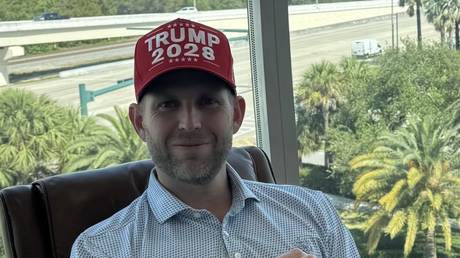 Trump starts selling 2028 election hats
Trump starts selling 2028 election hats
“It’s not something that I’m looking to do. And I think it would be a very hard thing to do.”
However, profiting from the idea appears to be a feasible option. Earlier this month, the US president launched a new line of “TRUMP 2028” merchandise, driving speculation about a possible third-term bid.
The official campaign store offers baseball caps and T-shirts, featuring “TRUMP 2028” and the slogan “Rewrite the Rules,” echoing the style of his iconic “Make America Great Again” branding.
Last month, Trump said he is “not joking” about potentially seeking a third term, claiming that there are “methods” to pursue another run despite the US Constitution’s two-term limit on the presidency. His comments fueled fears that he might attempt to overhaul the country’s electoral system in order to remain in power, though several high-profile Republicans dismissed the idea as little more than a joke.
Earlier this year, Republican Congressman Andy Ogles introduced a constitutional amendment that would allow presidents to serve three non-consecutive terms, though it has so far gained little traction.
-
Site: Crisis Magazine

By the time I was nearing high school graduation in the 1970s, my friend Jimmy Patridge, a young Marine, had already returned from Vietnam—missing both of his legs. The sexual revolution of the 1960s was in full swing, abortion had been legalized, and the Church seemed as confused as I was. At the same time, I became aware of two opposing forces: a dark presence in the world, and the voice of my…
-
Site: Mises InstituteUS Navy loses $60 million fighter jet after it fell off aircraft carrier. This brings the total cost of lost aircraft in Yemen up to $270 million since Trump took over.
-
Site: Real Investment Advice
The Zweig Breadth Thrust, a rare technical indicator, triggered a bullish signal on Friday. The signal indicates rapid and significant changes in momentum. The calculation is based on the 10-day moving average of the percentage of stocks that were positive on a daily basis. The Zweig Breadth Thrust signal occurs when the moving average rises from below 40% to above 61.5% within 10 days. It is trying to capture the final capitulation in a downward trend.
A Zweig bullish thrust signal is rare. But it's been a great predictor of positive forward returns when triggered, as shown below. Since 1950, the bullish indicator has only triggered 16 times, not including last Friday. The graph and table below show that in every instance the rare Zweig bullish thrust signal has occurred, it has consistently produced positive returns in the six-month and one-year periods. The shorter-term returns are positive in almost all cases. While this doesn't guarantee the downward trend is over, it does provide optimism that those willing to hold through more volatility and potentially lower lows will ultimately be rewarded.
Check out the Tweet of the Day below. It shares Jason Goepfert's analysis of triggering the even rarer Super Zweig. The Zweig Breadth Thrust and Jason's Super Zweig show average one-year returns, post trigger, in the mid-20s percentage range.

What To Watch Today
Earnings

Economy

Market Trading Update
Yesterday, we discussed the recent breakout above the 20-DMA and the downtrend from the February peak. Last week, saw a strong rally from the recent lows, which put markets back into a short-term overbought condition. As Goldman Sachs noted:
"On April 3, the S&P 500 opened at 5462 (when we got our first look at the now (in)famous tariff board after the close on April 2. Four days later, on April 7th, the S&P 500 made its one-year low of 4835. On Friday, after four consecutive positive trading sessions (S&P 500 gained 735bps during this stretch), we closed at 5525."

It should be unsurprising that after such a strong rally from the lows, and completely retracing the entire tariff decline, markets gave back a bit of the advance yesterday. What is crucial is that the recent breakout of the downtrend holds, without violating the rising trend line from the recent lows as shown. A violation of those levels would suggest a retest of recent lows. Such a decline would likely require either bad news on the tariff front or a collapse in economic data suggesting rising recession risks. Both are likely events at this juncture, and we must remain cautious.

This snippet from yesterday's blog encapsulates our current concerns.
"As the current correction continues, the market has violated the 40-week moving average. This has only happened a handful of times since 2008, namely during:"
- The Euro crisis in 2012
- Brexit in 2015
- The Fed Taper Tantrum in 2018
- COVID in 2020
- Russia/Ukraine War in 2022
- And currently.

"Each one of those corrections ended without a confirmed violation below the 200-week moving average, but each lasted a few months before the bull market returned. As the correction continues, the violation of the 40-week moving average puts us in the position of needing reduced equity risk in portfolios until we begin to see more bullish price action take shape."
Such is why we remain risk-averse for now and added to a short S&P 500 hedge last week.

Correction Continues- The Value Of Risk Management
Despite the recent rally, the correction continues. While wanting to “buy the dip” is tempting, there has been enough technical damage to warrant remaining cautious in the near term. As we have discussed, managing risk requires discipline and the emotional ability to navigate more volatile markets until a more straightforward path for risk-taking emerges. The problem with this statement is that it often immediately gets translated to mean “being entirely out of equities,” which is the act of “market timing.”
That is not what we mean by risk management. Repeated studies have evidenced that the problem with market timing is that individuals cannot successfully replicate the profitable timing of the buys and sells. However, individuals can increase and reduce exposure to risk during periods of higher volatility. This is because the most significant drawdowns tend to occur during periods of increased price volatility. As this correction continues, volatility remains relatively subdued. However, if the economy slips into a recession or some other event disrupts forward earnings expectations, there is undoubtedly a risk of a further increase.

Market Breadth Normalizes
As we led, the Zweig Breadth gauge indicates the potential for resuming the bullish trend. The SimpleVisor graphic below also provides optimism that the recent market decline and significant volatility are ending. Whether this period is a rest bit before further downside pressure, or signals a healing process that will lead to eventual upside, is unclear. As we highlight with the red square, all but three sectors have absolute and relative scores near zero. This entails that most sectors are trading similarly to the market. The absolute scores indicate most sectors are no longer oversold and have room to the upside (become overbought), but they also have room to become oversold again. The second graphic showing factor scores tells a similar story, with many scores near zero.


Tweet of the Day

“Want to achieve better long-term success in managing your portfolio? Here are our 15-trading rules for managing market risks.”
Please subscribe to the daily commentary to receive these updates every morning before the opening bell.
If you found this blog useful, please send it to someone else, share it on social media, or contact us to set up a meeting.
The post A Rare Zweig Breadth Thrust Provides Optimism appeared first on RIA.
-
Site: Zero HedgeLondon Is Losing Its MillionairesTyler Durden Tue, 04/29/2025 - 05:00
Authored by Guy Birchall via The Epoch Times (emphasis ours),
London is losing its richest residents.
The British capital has seen more than 30,000 millionaires vanish over the past 10 years.
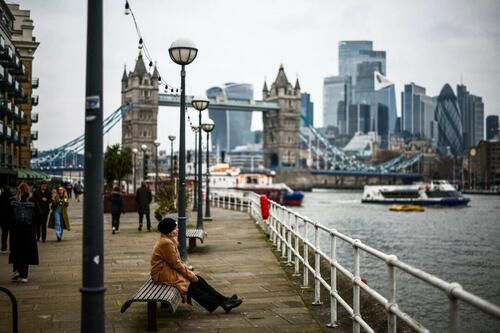 A person sits on a bench next to the River Thames backdropped by the City of London financial district and Tower Bridge in London on Feb. 13, 2025. Henry Nicholls/AFP via Getty Images
A person sits on a bench next to the River Thames backdropped by the City of London financial district and Tower Bridge in London on Feb. 13, 2025. Henry Nicholls/AFP via Getty Images
It has now dropped out of the top 5 cities for millionaires around the world, with New York, the Bay Area, Tokyo, Singapore, and Los Angeles all ranking higher, according to a report commissioned by Henley and Partners, a United Kingdom-based investment migration consultancy.
The firm found that London had lost 11,300 dollar millionaires in just 12 months, including 18 individuals with a net worth of $100 million or more, and two billionaires.
London, which now has 215,700 millionaires, is one of only two cities in the top 50 — the other being the heavily sanctioned capital of Russia, Moscow—that has fewer rich individuals than a decade ago.
In total, the British capital has lost 12 percent of its wealthiest residents since 2014, while Moscow has lost 25 percent.
Many millionaires fled Moscow in the wake of Western sanctions following the invasion of Ukraine in 2022.
Though the Russian capital has lost more millionaires as a percentage over the past decade, with 10,000 leaving, in terms of sheer numbers, London has lost three times that number in the same time frame.
The majority of departures have been to other European countries such as Italy and Switzerland, as well as the United Arab Emirates (UAE).
Dubai, in particular, has seen a huge growth in the number of millionaires over the past decade, increasing by 102 percent.
So what is driving the super-rich out of what was once one of the premier playgrounds of the rich and famous?
Andrew Amoils, head of research at New World Wealth, who carried out the report for Henley and Partners, told The Epoch Times there were numerous factors for London losing some of its wealthiest residents.
He said that rising concerns about crime and safety were the big factors putting the rich off the British capital.
“Safety is one of the key drivers of long-term wealth growth,” Amolis said. “Women and child safety is especially important—the recent child grooming scandal highlighted this crisis.”
Crime and Safety
A number of billionaires in recent months have made similar statements about crime being an issue.
Devin Narang, an Indian entrepreneur, said in a meeting attended by David Lammy, then shadow foreign secretary, that fear of crime in London was one of India’s elite’s biggest concerns about the city.
“People are being mugged in the heart of London–in Mayfair,” Narang, a member of the executive committee of the Federation of Indian Chambers of Commerce and Industry, said at a meeting in New Delhi in February 2024, the Financial Times reported.
“All CEOs in India have had an experience of physical mugging and the police [in London] not responding.”
Manchester United owner Sir Jim Ratcliffe also said that he had stopped wearing luxury watches in the capital.
“I can’t wear a watch in London, and I just need to be a bit wary, a bit careful,” Ratcliffe told The Sunday Times.
Ratcliffe, one of Britain’s wealthiest people, cited the story of a murder over a Rolex picked up on one of his company Ineos’s CCTV cameras at its headquarters in Knightsbridge.
“He died in a pool of blood because somebody tried to take his Rolex, and he resisted. About a year ago, we had three guys in hoodies, with machetes, right outside the office, opposite Harrods.”
More than 6,800 watches were reported stolen in 2023, the latest year for which figures are available, an increase from more than 6,000 in 2022.
Taxes a Turnoff
High taxes are another one of the prime reasons the rich no longer call London home.
Amoils said: “Capital gains tax and estate duty [inheritance tax] rates in the UK are amongst the highest in the world, which deters wealthy business owners and retirees from living there.
“The recent tax rises from the October 2024 budget have exacerbated this issue as they pulled non-doms, farms, and small businesses into the UK estate duty net.”
Non-dom, short for non-domicile, describes a person who lives in the UK, but whose permanent home for tax purposes is outside the country.
It refers to a person’s tax status and has nothing to do with their nationality, citizenship, or resident status, although it can be affected by these factors.
A non-dom previously only paid UK tax on the money they earn in Britain and did not have to pay tax to the British government on money made elsewhere in the world.
In October, the Labour government confirmed plans to abolish non-dom status from April 2025, and to replace it with a residence-based regime, which will also bring foreign earnings into the UK inheritance tax system.
Dwindling Importance
Another factor spurring the movement of millionaires is the fact that the city itself is becoming less globally significant.
“The London Stock Exchange (LSE) was once the largest stock market in the world by market cap, but it now ranks 11th globally,” Amolis said.
“The past two decades have been particularly poor, with a large number of delistings and relatively few new IPOs.
“The continued ascendance of rival financial hubs such as Dubai, Paris, Geneva, Milan, Lugano, Frankfurt, and Amsterdam has eroded London’s status as Europe’s top financial center.”
He added that growing American and Asian dominance of the global space has also prompted several wealthy tech entrepreneurs in the UK to reconsider their base location, with many moving to tech hubs in North America and Europe.
“A lot of the new wealth that has been created in the last decade has mainly been from the tech sector, so if you miss out on that, you are missing out on a huge amount of wealth,” Amolis said.
Amolis also said that the historic appeal of London and the UK was its use of English, which remains either the first or second language of most millionaires globally.
“However, over time, this has become less relevant as the economies of the other major English-speaking countries like the United States, Australia, and Canada have grown,” he said.
“Furthermore, there are now several other high-income markets globally where one can get by only speaking English, including the likes of Singapore, the UAE, New Zealand, and Malta.”
Another factor is that part of the drop in the number of wealthy people in London is not necessarily that they left the city; they just became less well off due to the drop-off in the stock market and a worsening exchange rate of the pound against the dollar.
“A lot of them have just got less money,” Amolis said. “So, for instance, if someone was worth $1.2 billion and then their investments have gone down and they are now worth $900 million, they are no longer a billionaire.”
Despite this drop in wealthy residents, London remains one of the most expensive cities to live in, with property prices per square meter higher than anywhere else on the planet—other than Hong Kong, New York, and Monaco.
-
Site: southern orders
While I alternate between the use of the terms conservative and liberal for Church matters, I do think it is better to best to use orthodox and heterodox to describe the polarization in the Church that has existed since Vatican II and on steroids today because of the pontificate of the late Pope Francis, RIP.
Orthodoxy and heterodox give religious and theological significance to these two groups.
For example, a papal candidate who embraces the social teachings of the Church that go back to the 1800’s is orthodox but in political terms would be seen as liberal or progressive. Orthodox Catholics must be careful about criticizing any Catholic who takes seriously the Church’s social teachings which are in fact, in political terms, progressive or liberal. These are orthodox.
Heterodox papal candidates who want to ordain women, active gays and so-called transgendered people and start processes of blessing LGBTQ couples, triads or polygamists, which will lead to accepting these as “sacramental marriages” are progressive and liberal in the political sense but clearly heterodox if not heretical.
A papal candidate that forgoes the tradition of papal trappings can be very orthodox but appear as a liberal or progressive when if fact they aren’t.
Thus so-called traditional Catholics should be very careful about seeing papal candidates through a political lens. One can be very pastoral and have an outreach to those most in need of salvation but be very orthodox.
The heterodox don’t care about the salvation of souls, only embracing the sinner and the sin.
The heterodox don’t love sinners and can’t differentiate between the sin and the sinner. They might be traditional and conservative but they are still heterodox.
-
Site: southern orders
While I alternate between the use of the terms conservative and liberal for Church matters, I do think it is better to best to use orthodox and heterodox to describe the polarization in the Church that has existed since Vatican II and on steroids today because of the pontificate of the late Pope Francis, RIP.
Orthodoxy and heterodox give religious and theological significance to these two groups.
For example, a papal candidate who embraces the social teachings of the Church that go back to the 1800’s is orthodox but in political terms would be seen as liberal or progressive. Orthodox Catholics must be careful about criticizing any Catholic who takes seriously the Church’s social teachings which are in fact, in political terms, progressive or liberal. These are orthodox.
Heterodox papal candidates who want to ordain women, active gays and so-called transgendered people and start processes of blessing LGBTQ couples, triads or polygamists, which will lead to accepting these as “sacramental marriages” are progressive and liberal in the political sense but clearly heterodox if not heretical.
A papal candidate that forgoes the tradition of papal trappings can be very orthodox but appear as a liberal or progressive when if fact they aren’t.
Thus so-called traditional Catholics should be very careful about seeing papal candidates through a political lens. One can be very pastoral and have an outreach to those most in need of salvation but be very orthodox.
The heterodox don’t care about the salvation of souls, only embracing the sinner and the sin.
The heterodox don’t love sinners and can’t differentiate between the sin and the sinner. They might be traditional and conservative but they are still heterodox.
-
Site: Zero HedgeBezos-Backed Startup Debuts Pickup Truck Reminiscent Of 1980s Toyota HiluxTyler Durden Tue, 04/29/2025 - 04:15
A Jeff Bezos-backed startup unveiled on X a cheap electric truck priced at roughly half the cost of the average new American pickup. The catch: it lacks power windows, infotainment screens, and self-driving features.
"The people spoke. We built. Meet the radically simple, radically affordable Slate," Slate Auto wrote in the post on X on Thursday.
The people spoke. We built. Meet the radically simple, radically affordable Slate. Reserve yours at https://t.co/Y5RkOIFCRo pic.twitter.com/uvSZVpdkWv
— Slate Auto (@slateauto) April 25, 2025"A radically simple electric pickup truck that can change into whatever you need it to be — even an SUV," the Slate Auto website says, adding, "Made in the USA at a price that's actually affordable (no really, for real)."
At 14.5 feet long, the customizable EV is more akin to a Toyota pickup (Hilux) from the mid-1980s.
The range of the EV truck is abysmal, at 150 miles - or 240 miles with a longer-range battery pack - the vehicle in our minds is not a serious truck - instead, similar to mini trucks Americans are importing from Japan to run around town.
Any serious work, whether towing or hauling actual weight, in the EV space will be done by the Tesla Cybertruck or the Rivian truck, or a diesel-powered truck by Dodge, Ford, or Chevy for long-haul towing.
Again, the Slate Auto vehicle isn't a serious pickup truck, but it does look like fun to run around town.
-
Site: RT - News
The US president could use a lack of progress in peace talks as an “excuse” to walk away, unnamed officials in the bloc have told the paper
EU officials are worried that US President Donald Trump could be on the verge of abandoning his efforts to find a diplomatic solution to the Ukraine conflict, the Financial Times has reported.
During his election campaign, Trump repeatedly promised to swiftly put an end to the fighting between Moscow and Kiev. However, after the first 100 days of his second term in the White House he has not been able to get the two sides to engage in direct talks with each other or agree to a full 30-day ceasefire proposed by Washington.
Russia’s reluctance to give in to key demands by the US and Ukraine and the overall “complexity of the conflict” have made Trump rethink his commitment to the peace process, the FT reported on Monday, citing unnamed Western European officials.
One official suggested that Trump was “setting up a situation where he gives himself excuses to walk away and leave it to Ukraine and us [EU] to fix.”
Read more Ukraine won’t win – Vance
Ukraine won’t win – Vance
Another source, who is said to have been briefed on the discussions, claimed that US officials are “getting concerned that they are really coming back with nothing in talks with Russia” and have begun floating ideas for a deal that would fit into Trump’s quick timeline for achieving peace.
The US president’s “impatience” when it comes to ending the conflict is a “problem,” the source added.
A senior Ukrainian official also told the FT he believes there is a “serious possibility” that Washington could abandon Kiev.
Trump said on Sunday that he wants a deal between Russia and Ukraine to be achieved within “two weeks or less.” US Secretary of State Marco Rubio warned at the weekend that the US could disengage from the peace process if it does not see rapid progress in discussions. Washington is now trying to make a “determination about whether this is an endeavor that we want to continue to be involved in,” Rubio told NBC News’ Meet the Press.
READ MORE: Trump abandons Ukraine election demand – US state media
Russian officials have said on numerous occasions that Moscow is ready to begin talks with Kiev without any preconditions. However, Kremlin spokesman Dmitry Peskov noted on Monday that so far Russia has not seen any steps from Ukraine that would signal its eagerness to start negotiating.
-
Site: Mises InstituteThe Liberal Party, led by new Prime Minister Mark Carney, is projected to form a minority government in a dramatic political comeback, defeating the Conservative Party, led by Pierre Poilievre.

